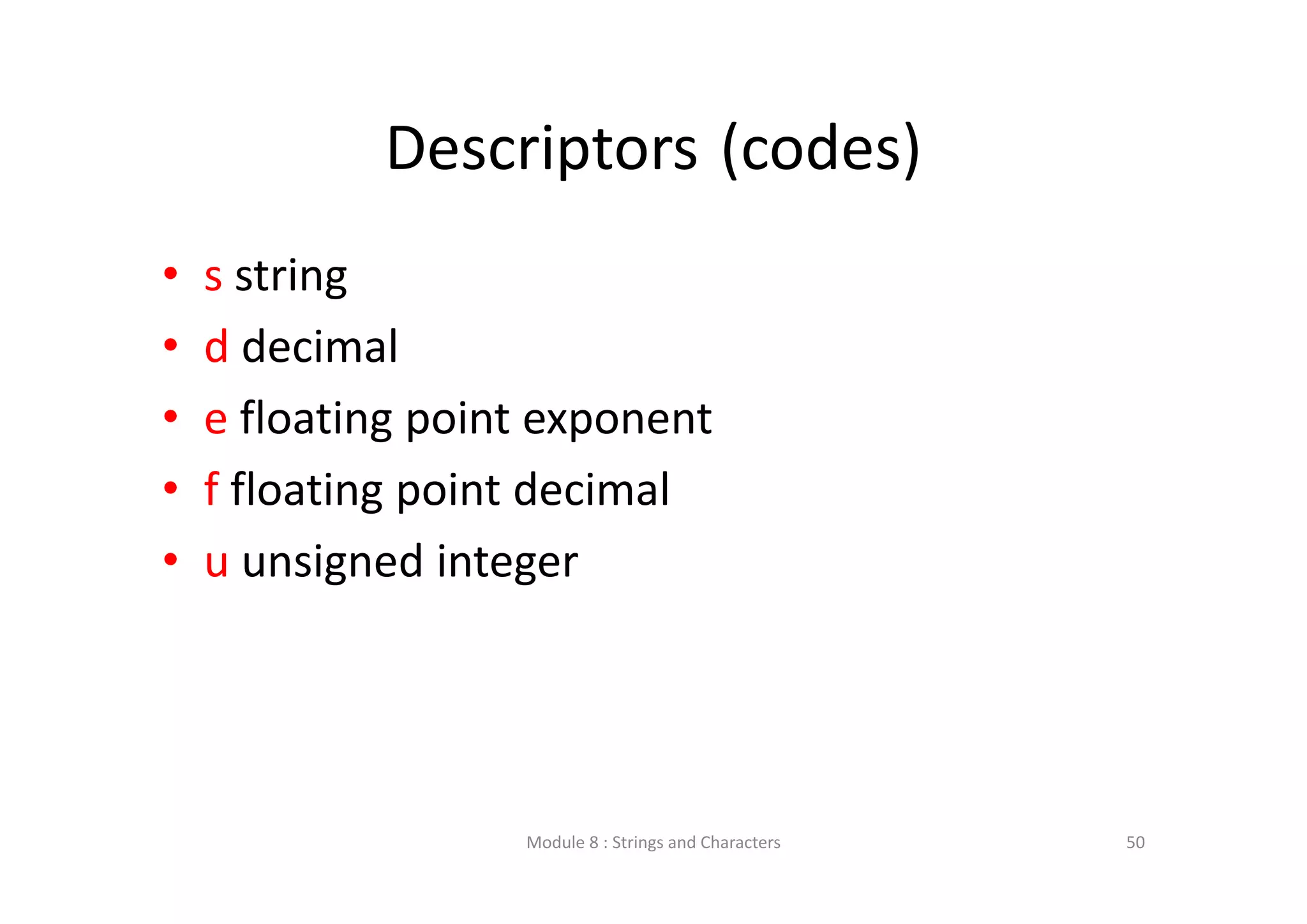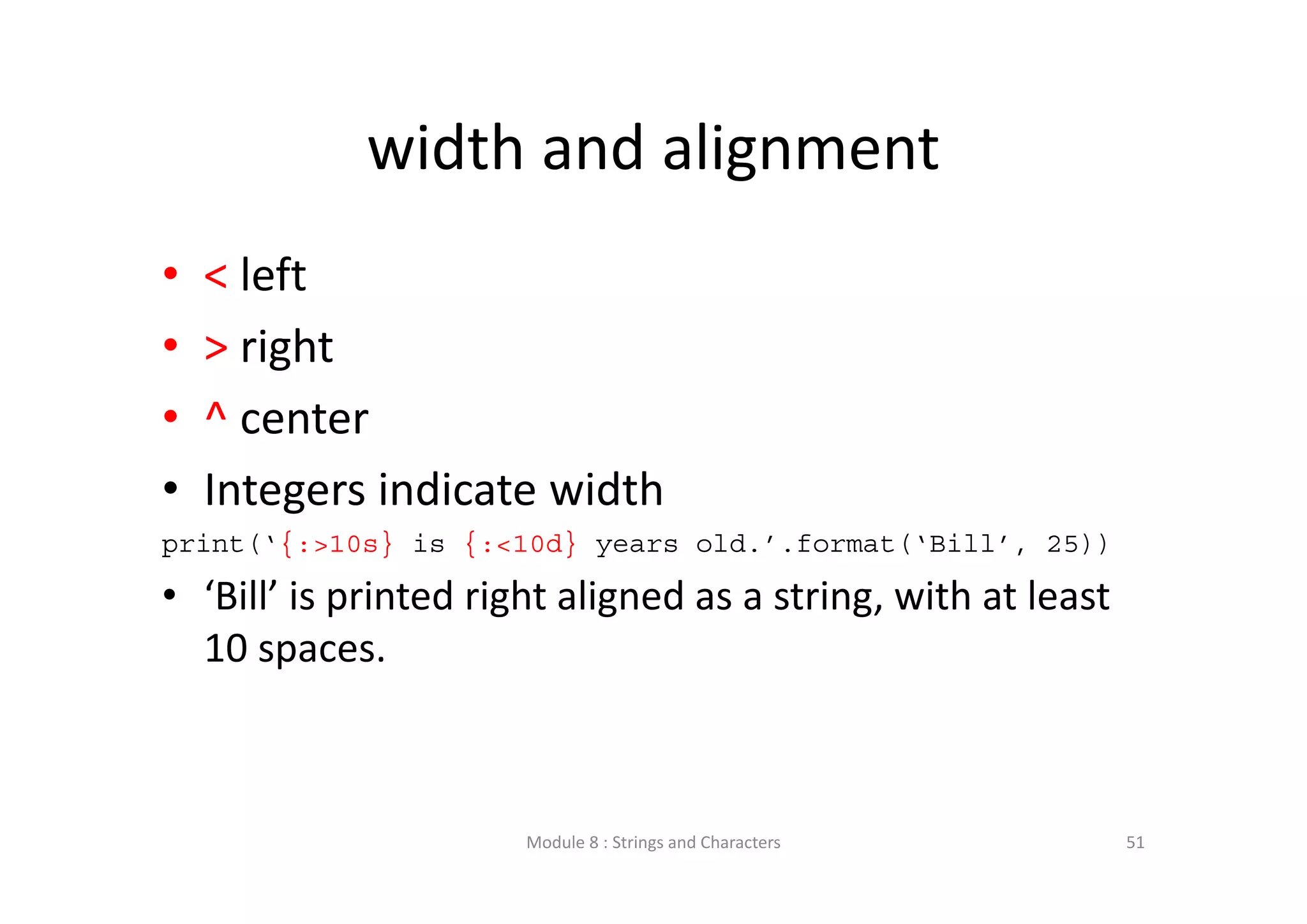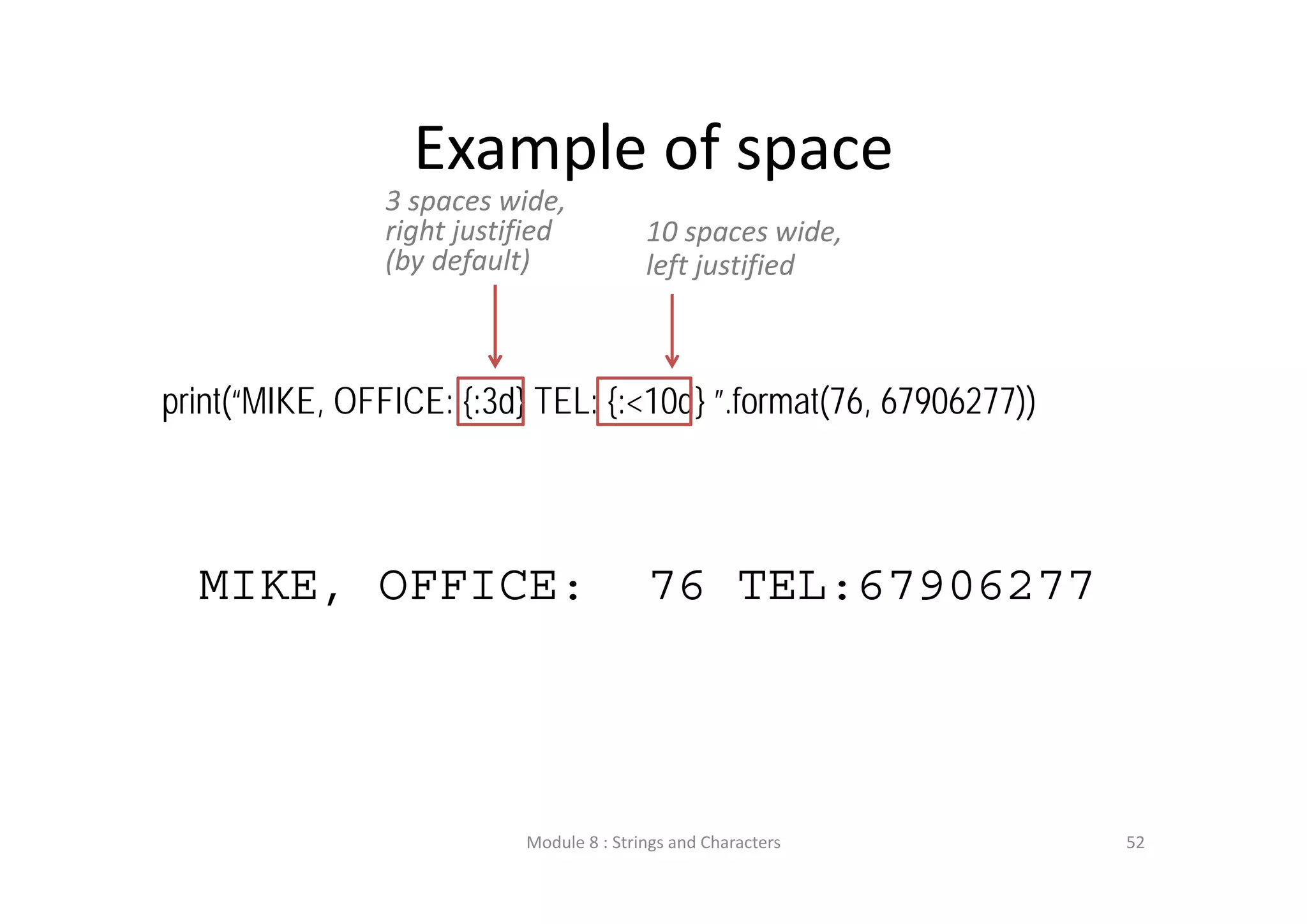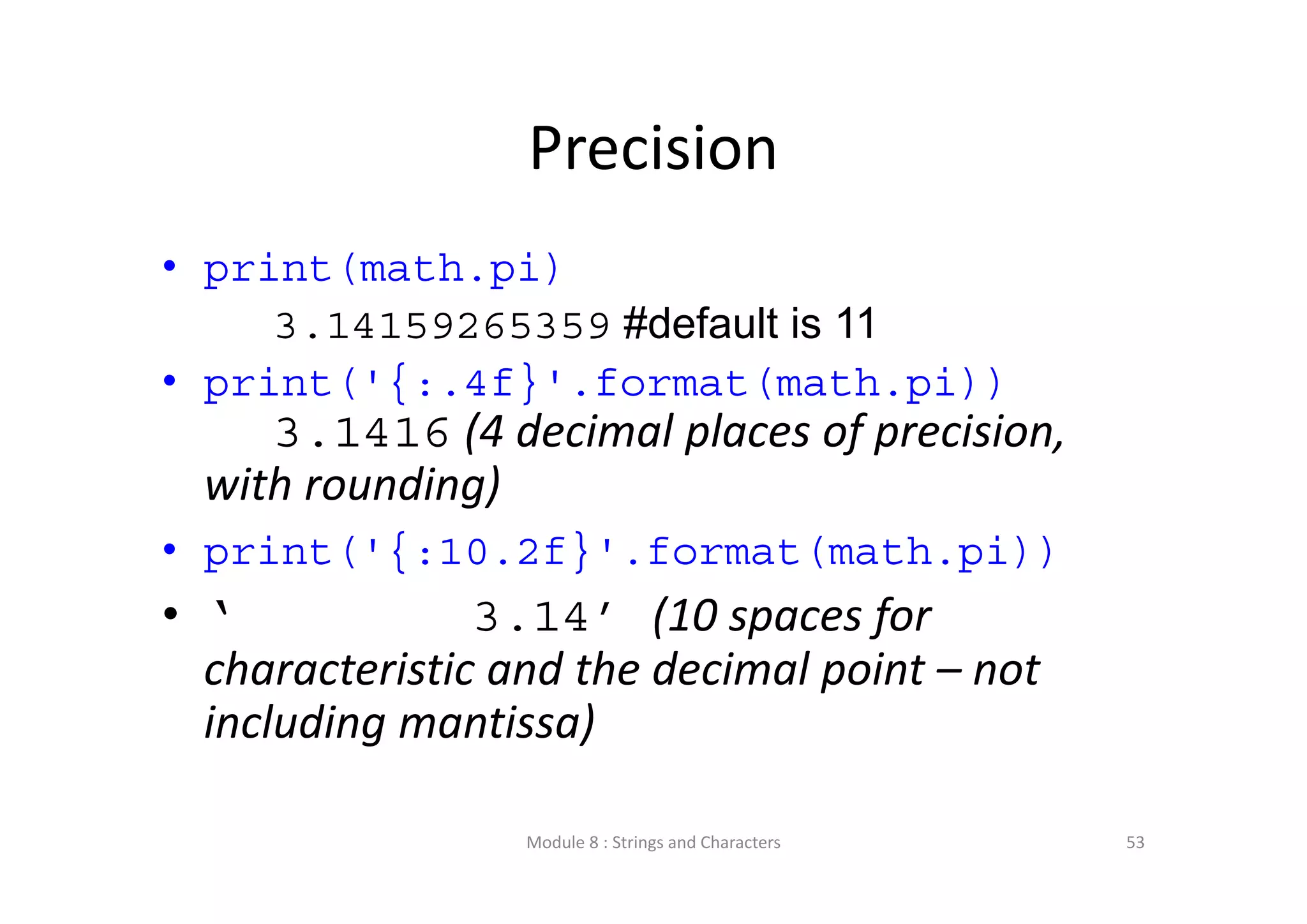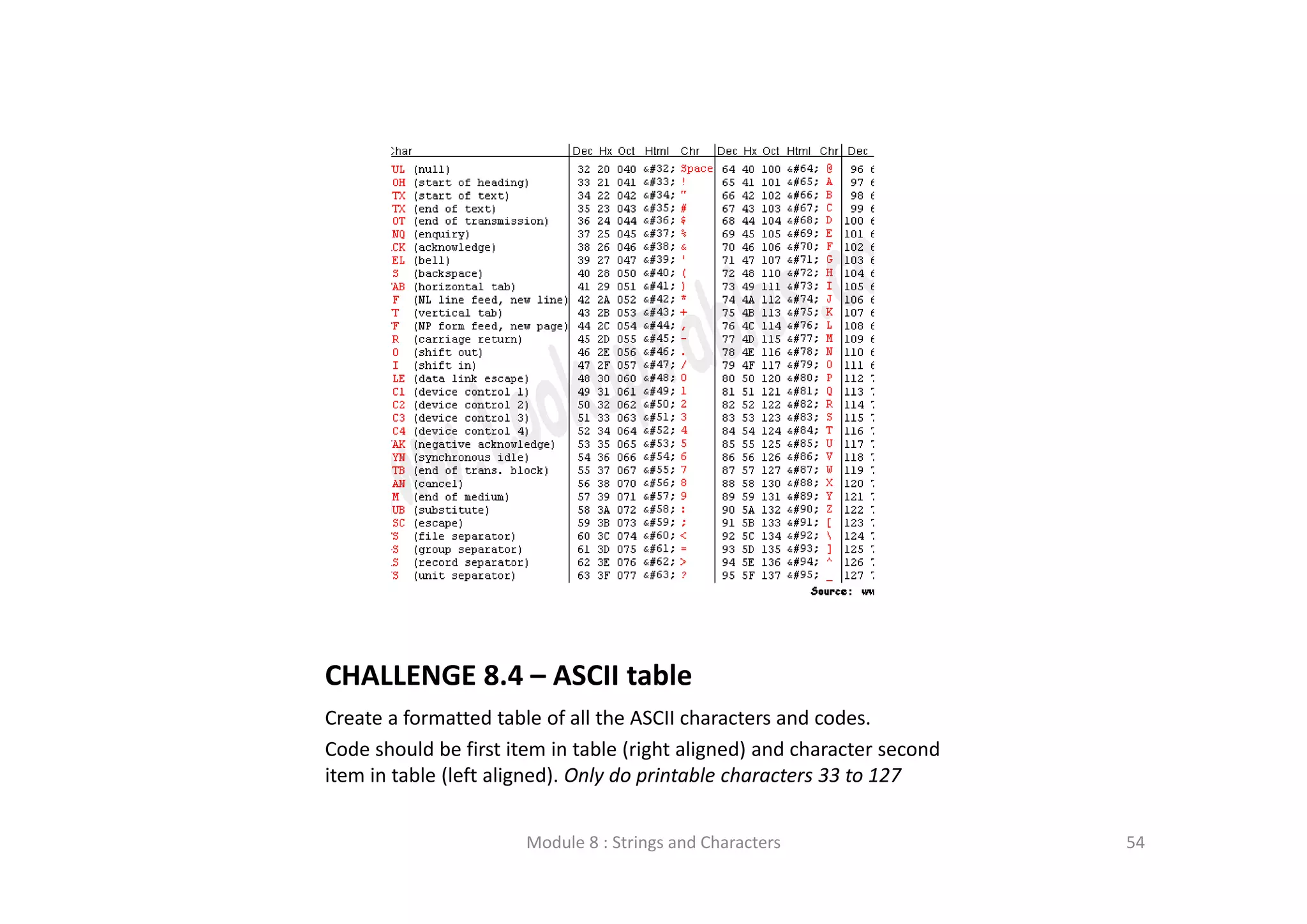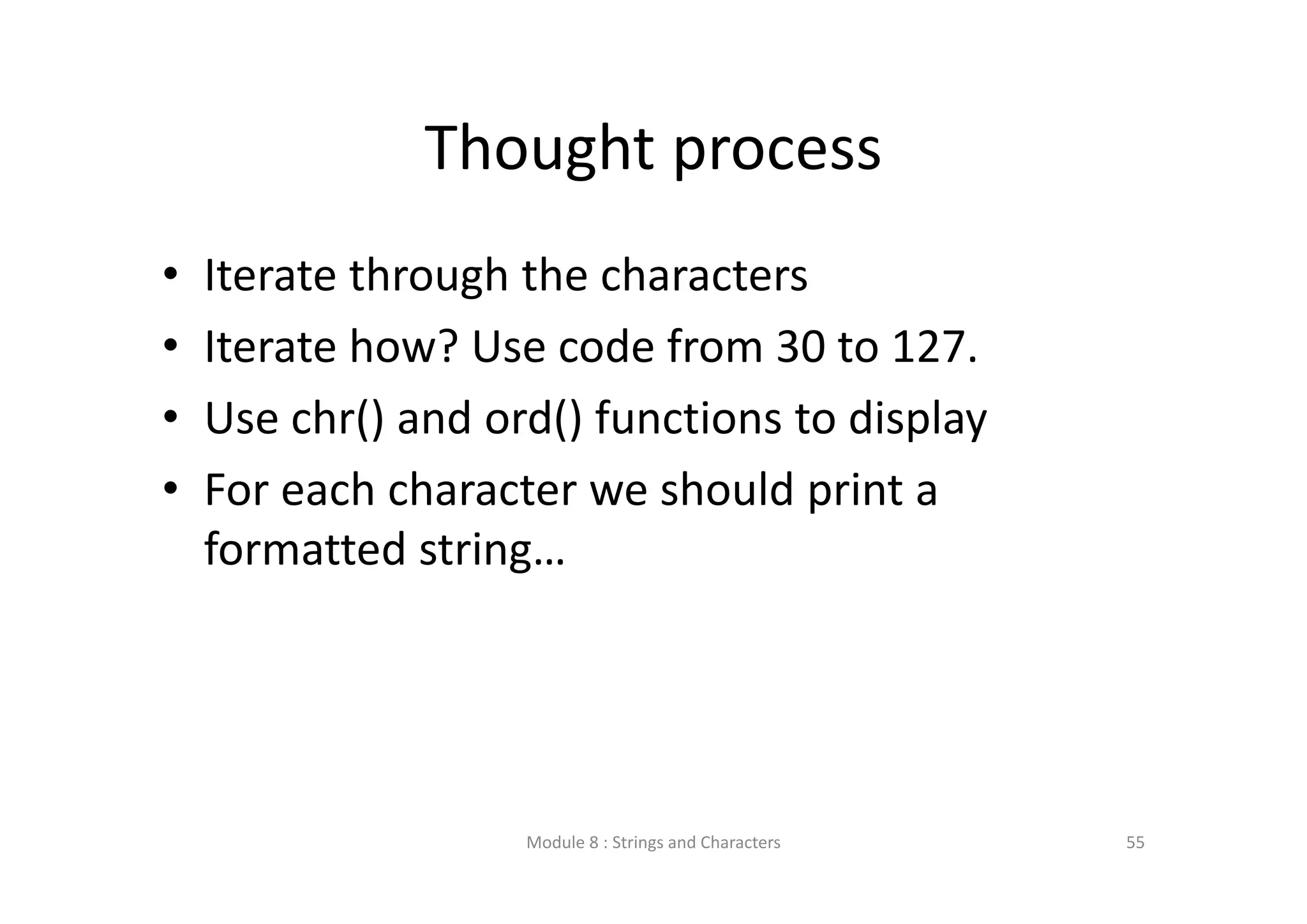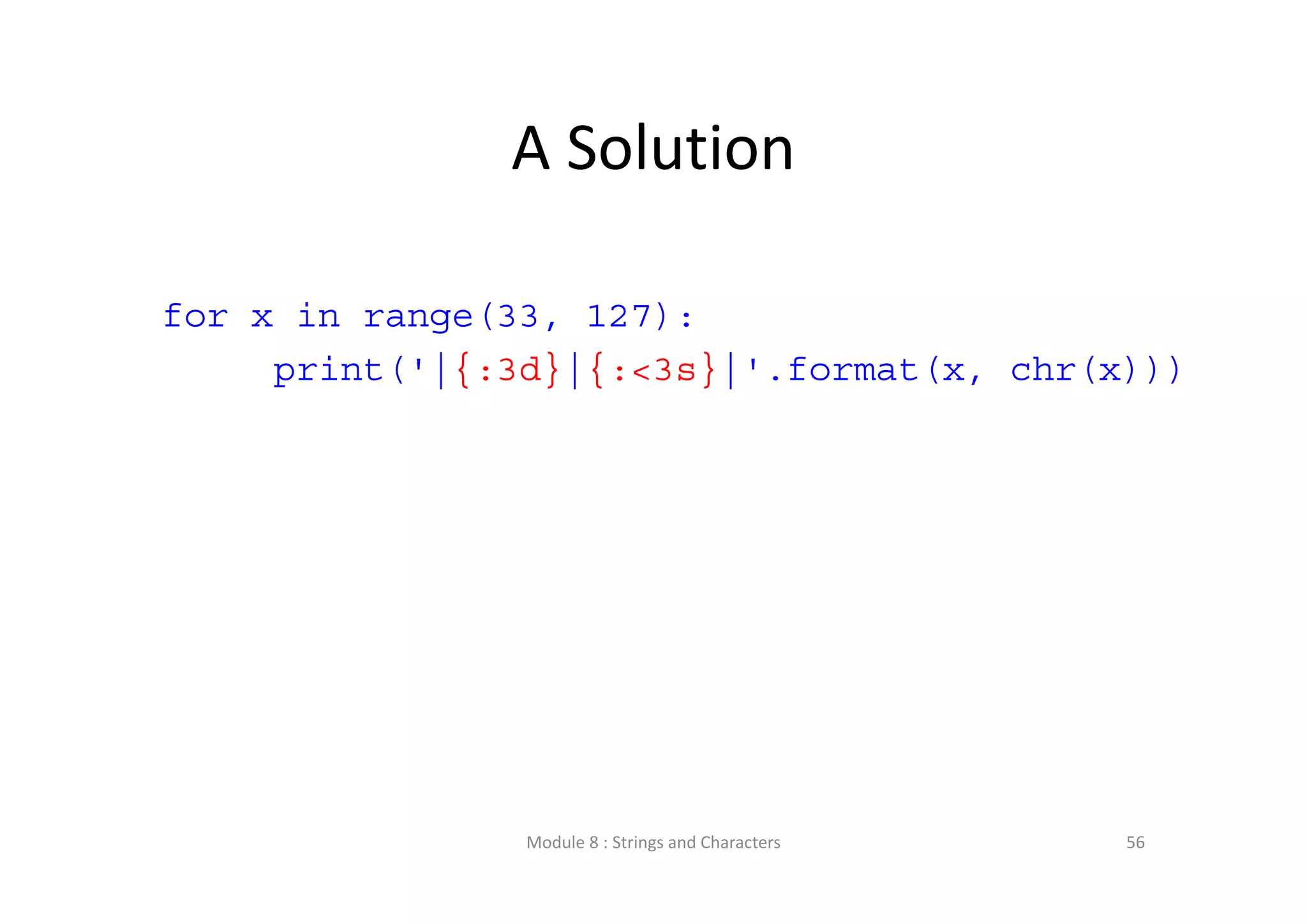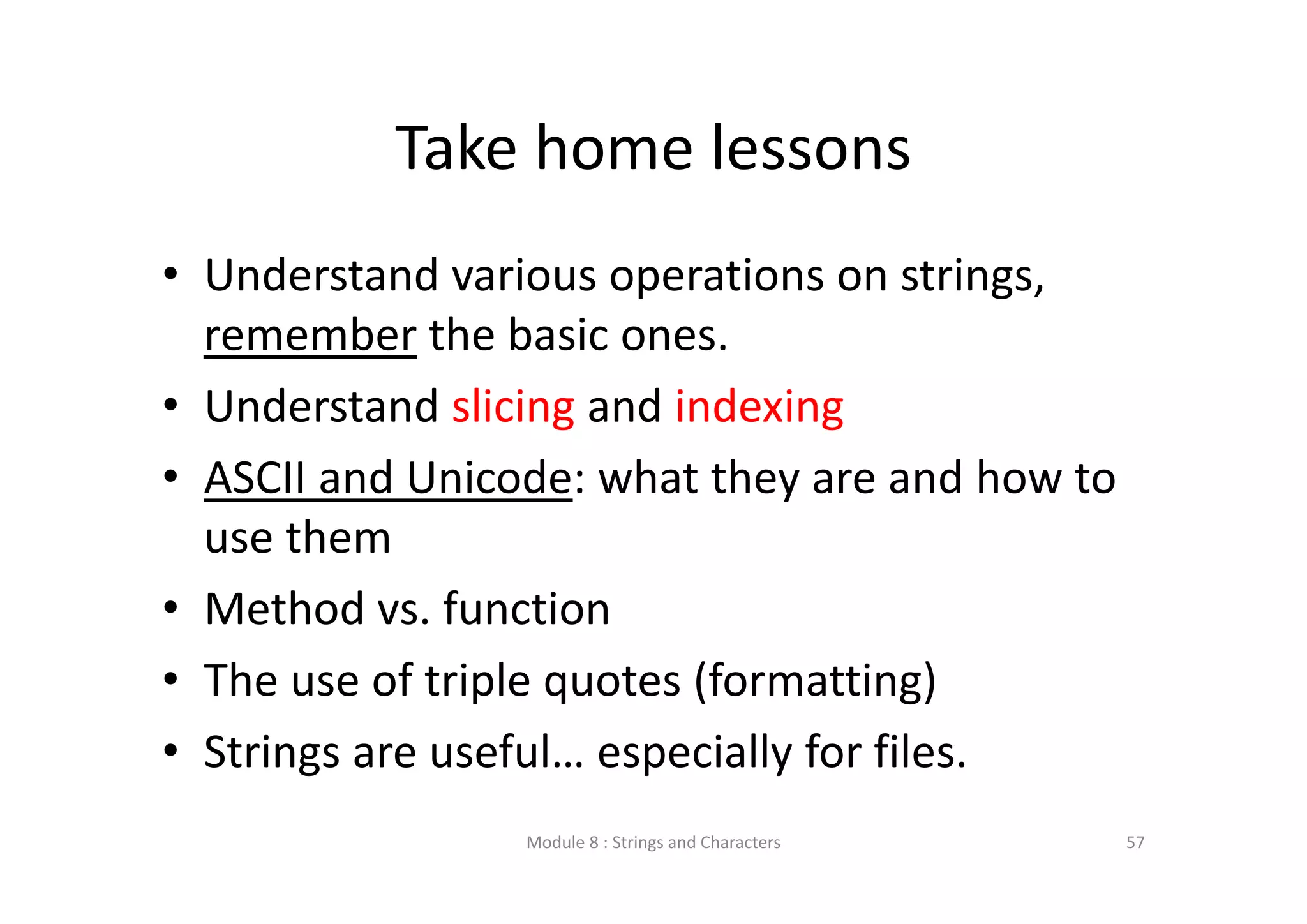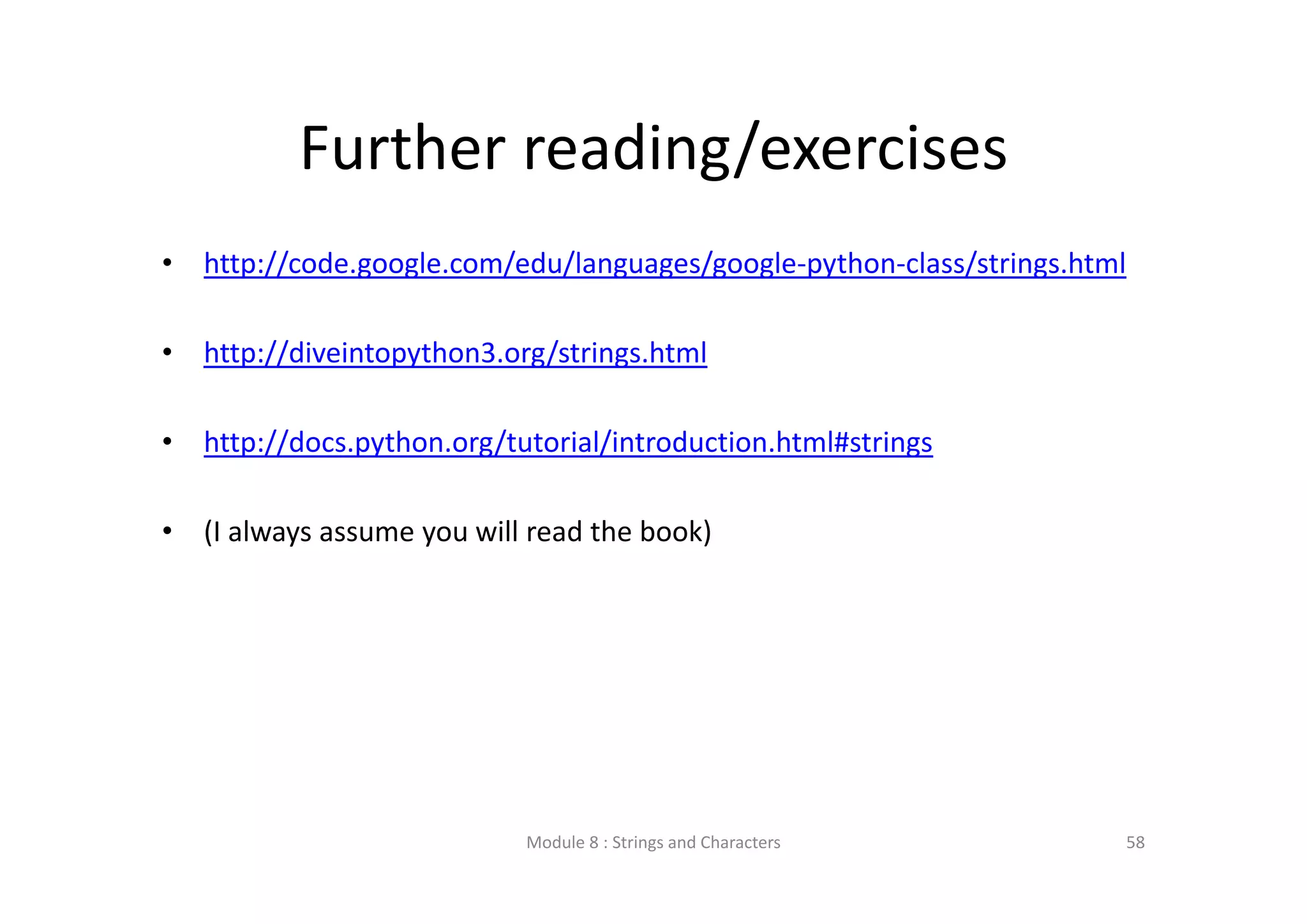This document discusses strings and characters in Python. It defines strings as sequences of characters and describes how to define, access elements of, slice, and perform operations on strings. It also discusses string methods like upper(), lower(), find(), and chaining methods. Functions for working with strings like len() are also covered. The document provides examples and exercises to help understand strings and characters in Python.
![Introduction to computational thinking Module 8 : Strings and Characters Module 8 : Strings and Characters 1 Asst Prof Michael Lees Office: N4‐02c‐76 email: mhlees[at]ntu.edu.sg](https://image.slidesharecdn.com/lecture8stringsandcharacters-130525014000-phpapp02/75/Lecture-8-strings-and-characters-1-2048.jpg)

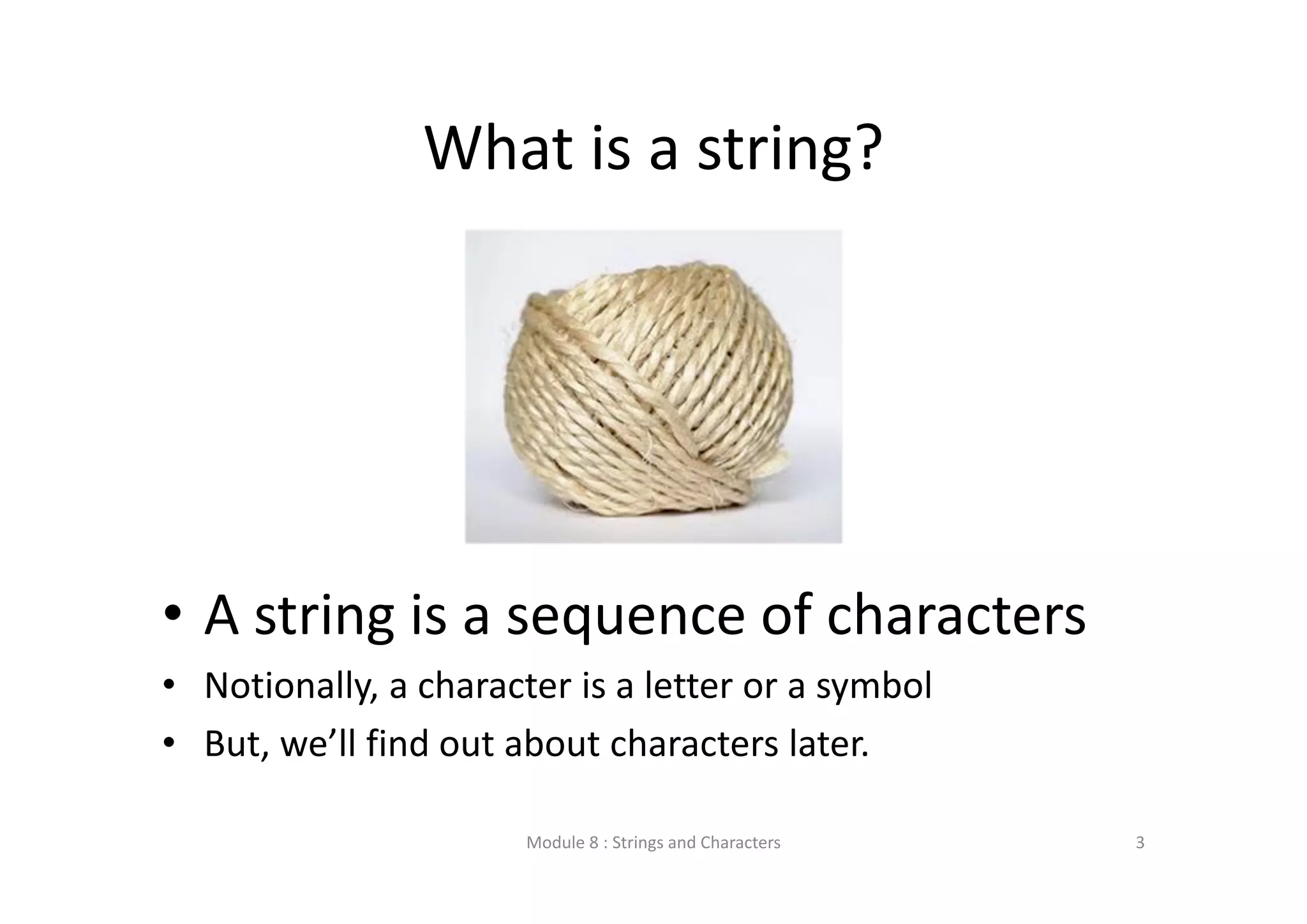
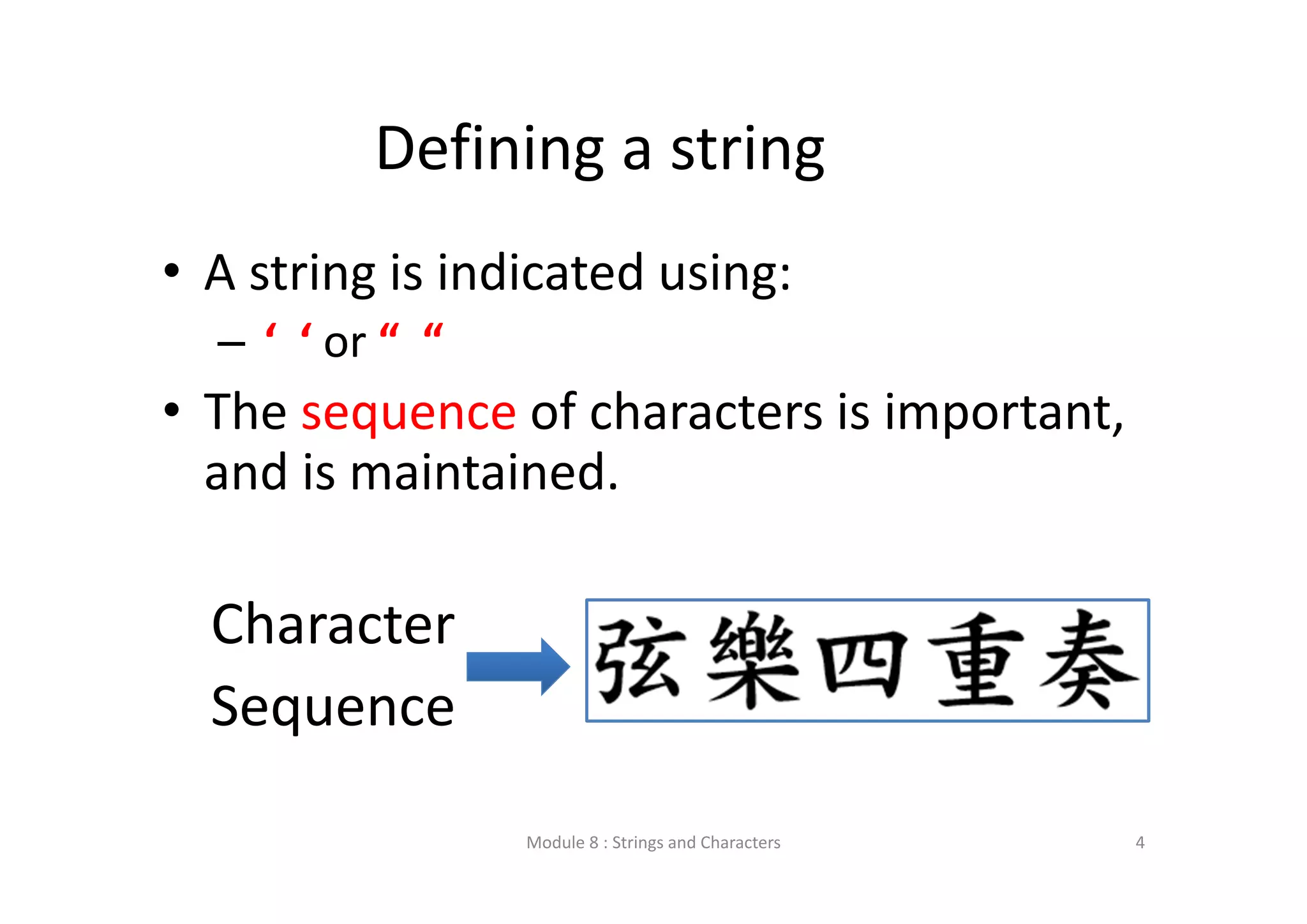
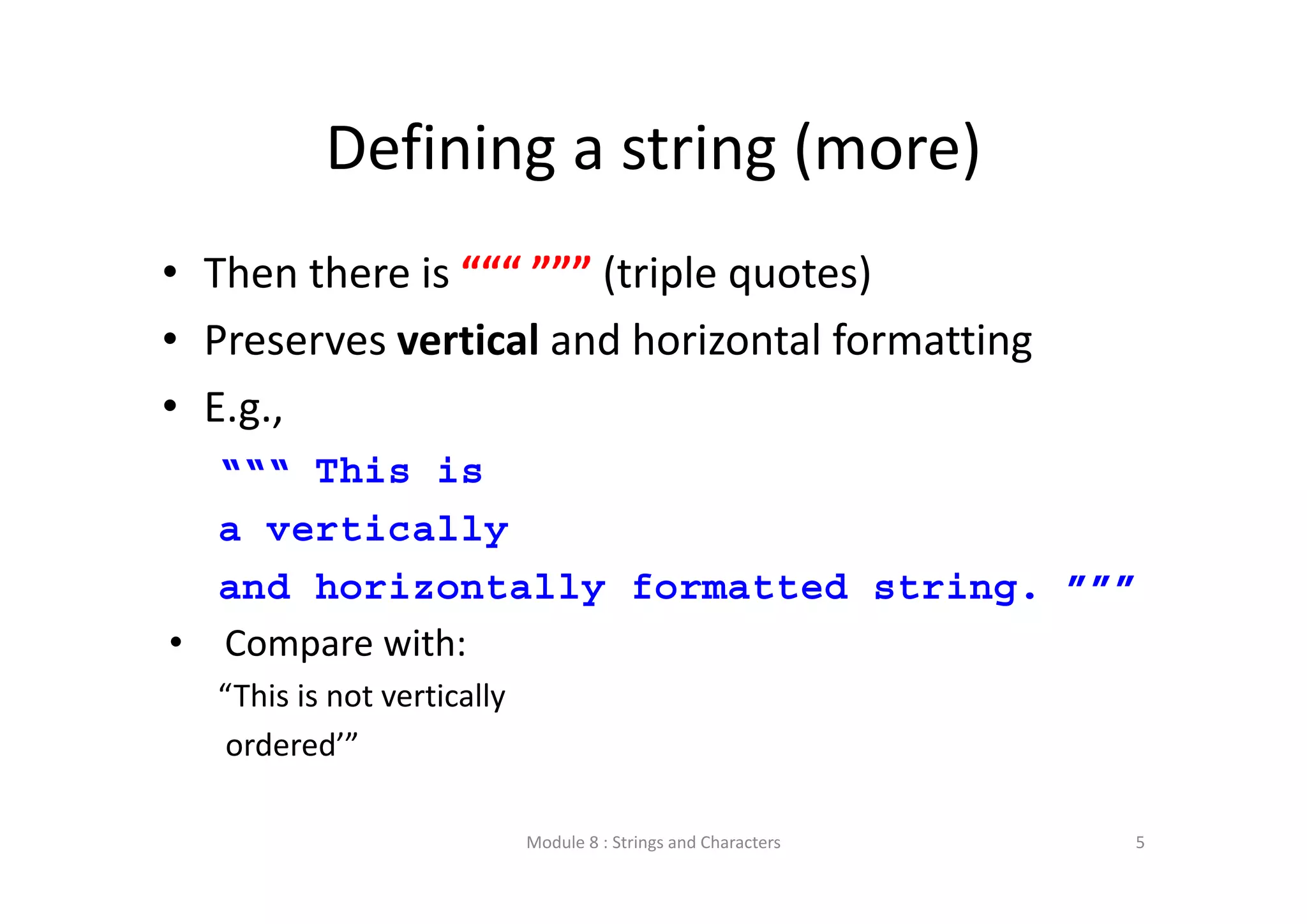
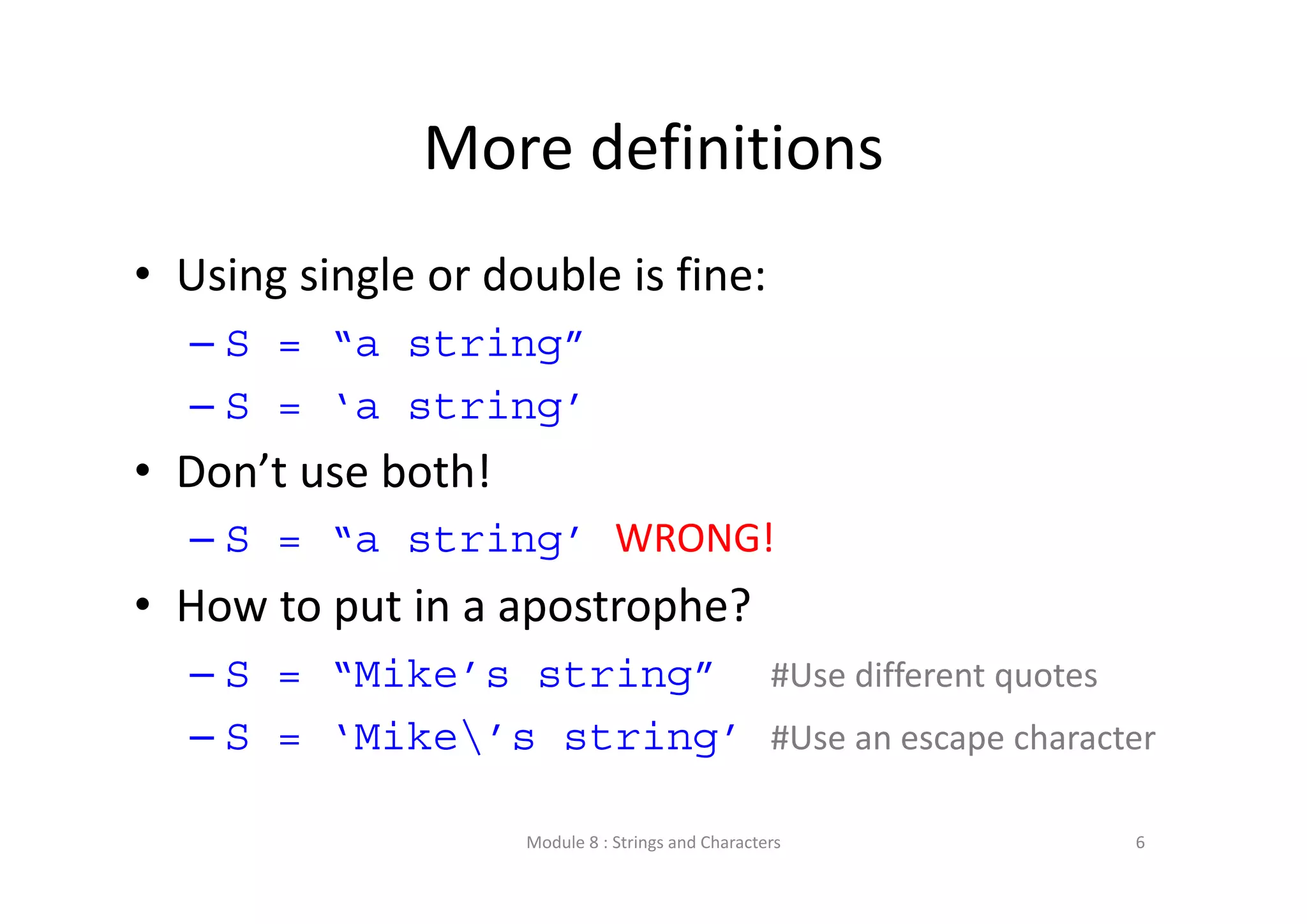
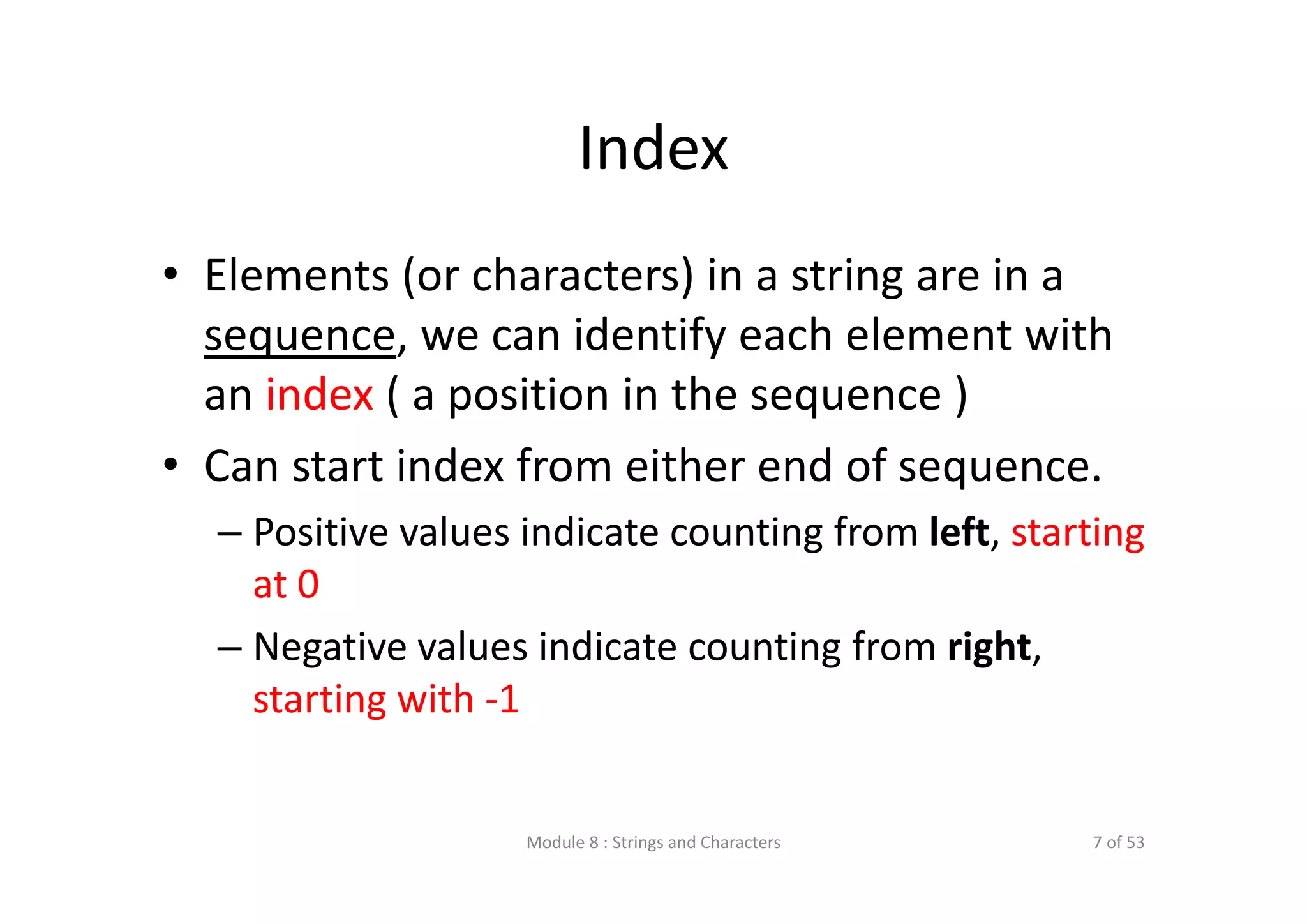
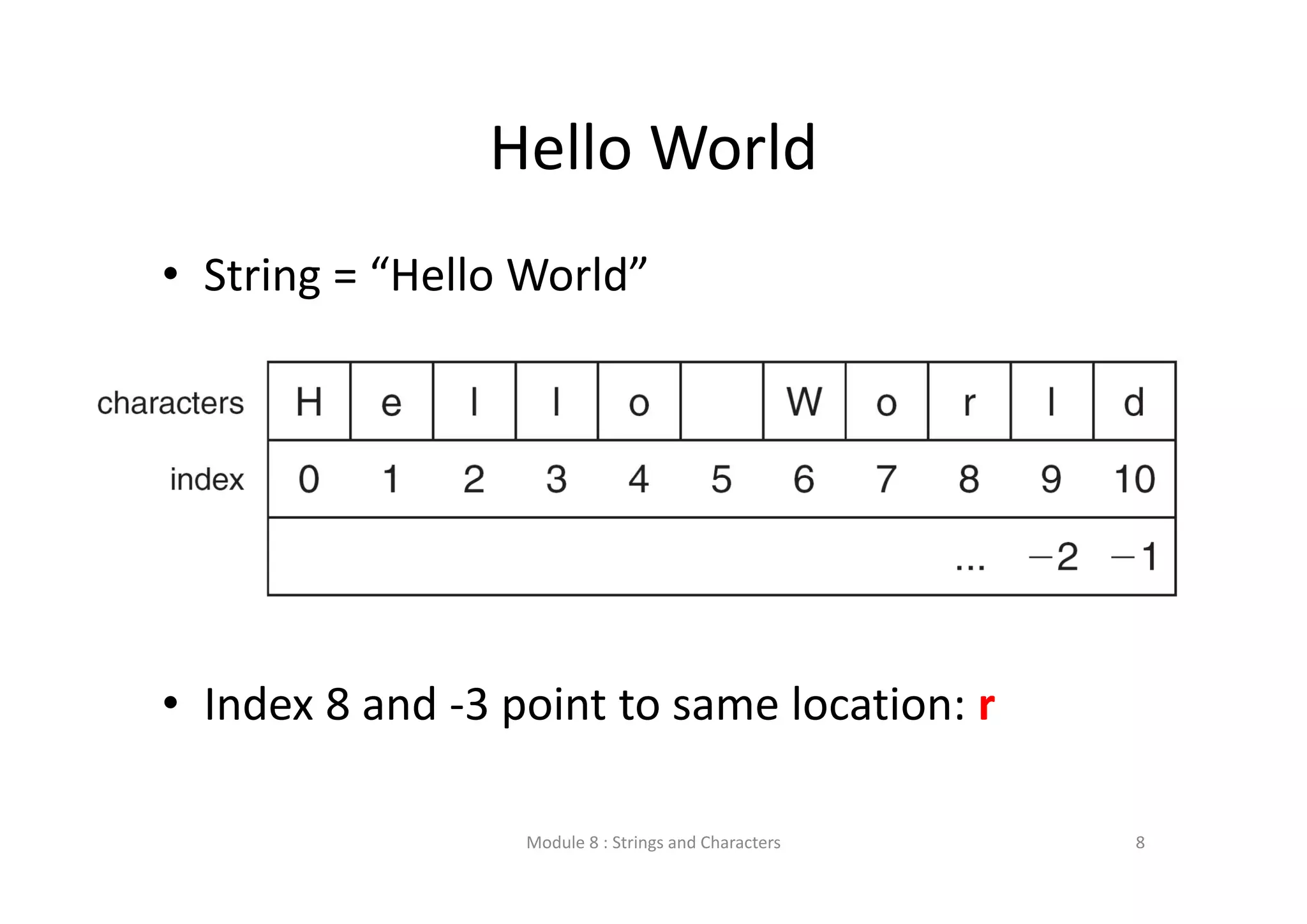
![Accessing one element • We can use [ ] to access particular characters in a string: myStr = “Hello World” x = myStr[1] print x #will print e print mystr =>? print myStr[-2] => ? print myStr[11] => ? Module 8 : Strings and Characters 9](https://image.slidesharecdn.com/lecture8stringsandcharacters-130525014000-phpapp02/75/Lecture-8-strings-and-characters-9-2048.jpg)
![Slicing: parts of a String • You can also select a part of the string, slice of characters • Similar syntax, [ start : finish ] – start : index of start of subsequence – finish: index of position after we want the subsequence to end (i.e., the sequence will not contain character myStr[finish]) • If start or finish are not specified they default to the beginning and end of the string respectively. Module 8 : Strings and Characters 10](https://image.slidesharecdn.com/lecture8stringsandcharacters-130525014000-phpapp02/75/Lecture-8-strings-and-characters-10-2048.jpg)
![Slicing: parts of a String • Slicing uses half‐open ranges, common in python. (Different from fully closed ranges) • The first index is included, the last index is the one after what is included. myStr = “Hello World” myStr[1:4] => ? Module 8 : Strings and Characters 11](https://image.slidesharecdn.com/lecture8stringsandcharacters-130525014000-phpapp02/75/Lecture-8-strings-and-characters-11-2048.jpg)
![Slicing: Examples myStr = “Hello World” print(myStr[1:6]) print(myStr[1:2]) print(myStr[-7:-1]) print(myStr[-3:-5]) print(myStr[:6]) print(myStr[5:]) ello e o Worl ‘ ‘ (empty) Hello World Output Module 8 : Strings and Characters 12 of 53](https://image.slidesharecdn.com/lecture8stringsandcharacters-130525014000-phpapp02/75/Lecture-8-strings-and-characters-12-2048.jpg)
![One more example myStr[3:-2] Module 8 : Strings and Characters 13 of 53](https://image.slidesharecdn.com/lecture8stringsandcharacters-130525014000-phpapp02/75/Lecture-8-strings-and-characters-13-2048.jpg)
![Slicing and skipping • We can specify a third argument: – [ start : finish : countBy ] • countBy specifies a ‘skip’ • Defaults: – start = beginning – finish = end – countBy = 1 myStr = “Hello World” myStr[1:11:2] =>’el ol’ Module 8 : Strings and Characters 14 of 53](https://image.slidesharecdn.com/lecture8stringsandcharacters-130525014000-phpapp02/75/Lecture-8-strings-and-characters-14-2048.jpg)
![Slicing and skipping myStr[::2] =>’HloWrd’ Module 8 : Strings and Characters 15 of 53](https://image.slidesharecdn.com/lecture8stringsandcharacters-130525014000-phpapp02/75/Lecture-8-strings-and-characters-15-2048.jpg)
![Python Idioms • Idiom : “A form of expression natural to a language, person, or group of people” • These are things particularly unusual/unique to python • Copying a string: aString = “String to copy” newStr = aString[:] newStr = ‘’.join(aString) • To reverse a string: aString = “Madam I’m Adam” revString = aString[::-1] => ? Module 8 : Strings and Characters 16](https://image.slidesharecdn.com/lecture8stringsandcharacters-130525014000-phpapp02/75/Lecture-8-strings-and-characters-16-2048.jpg)
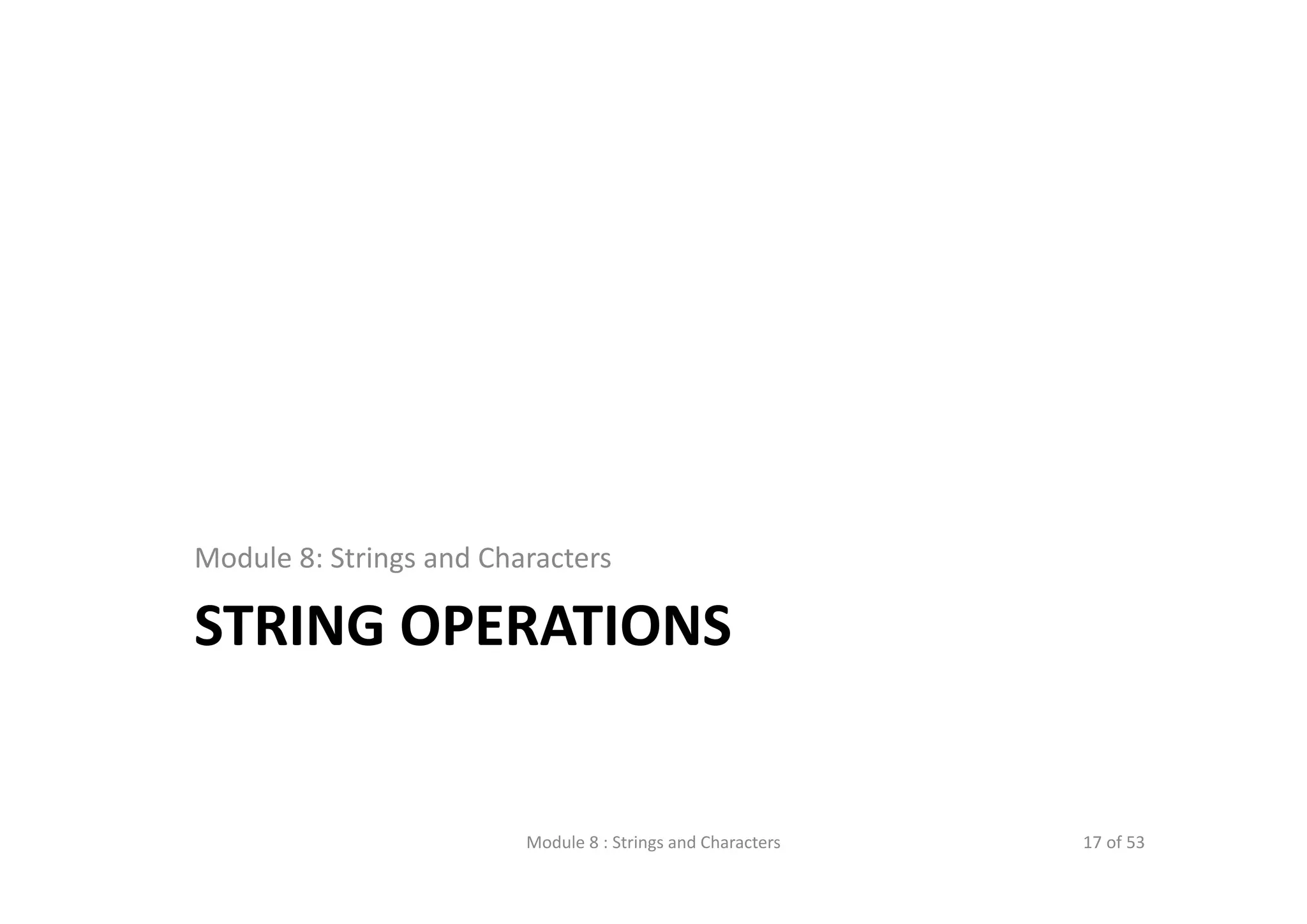
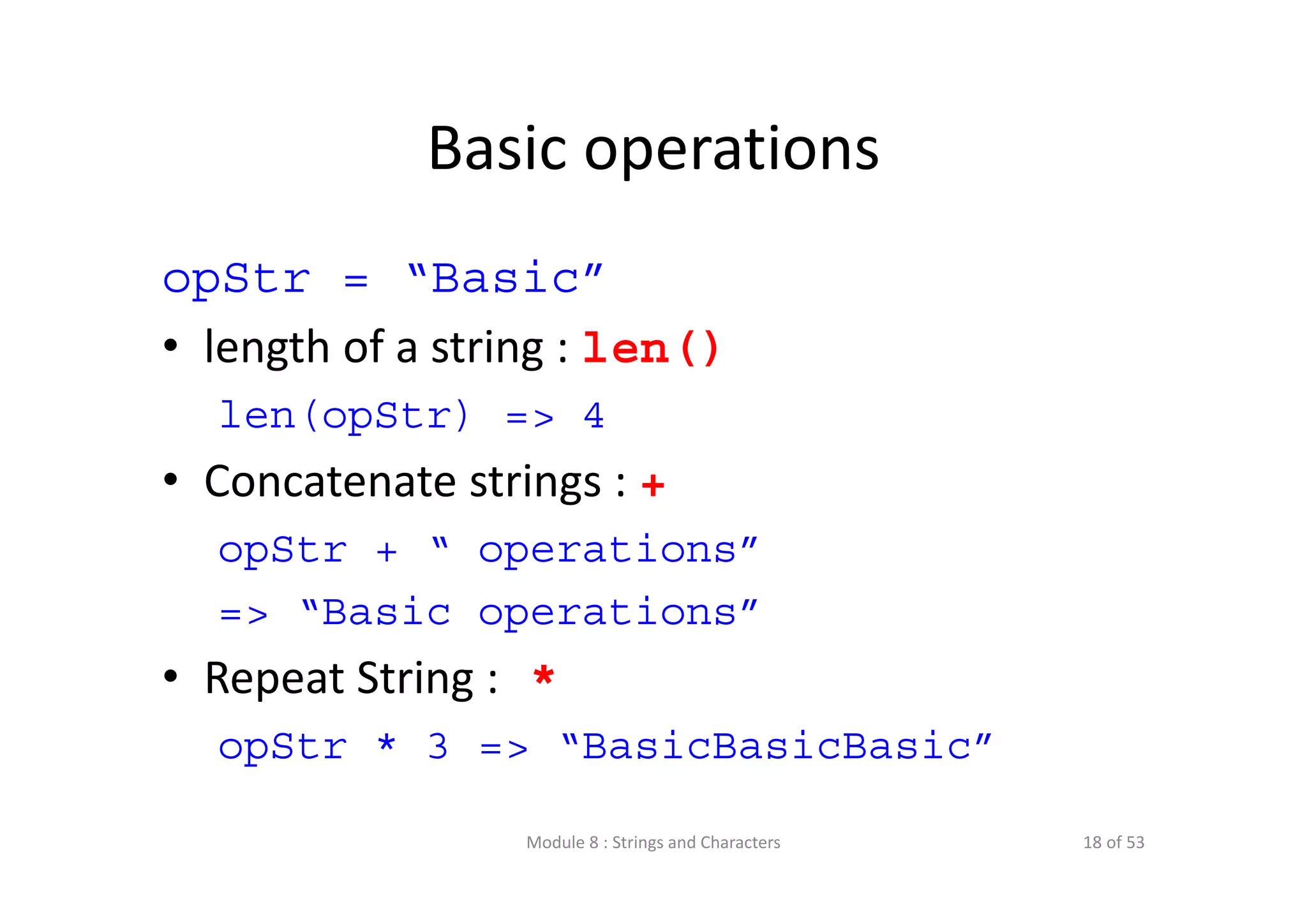
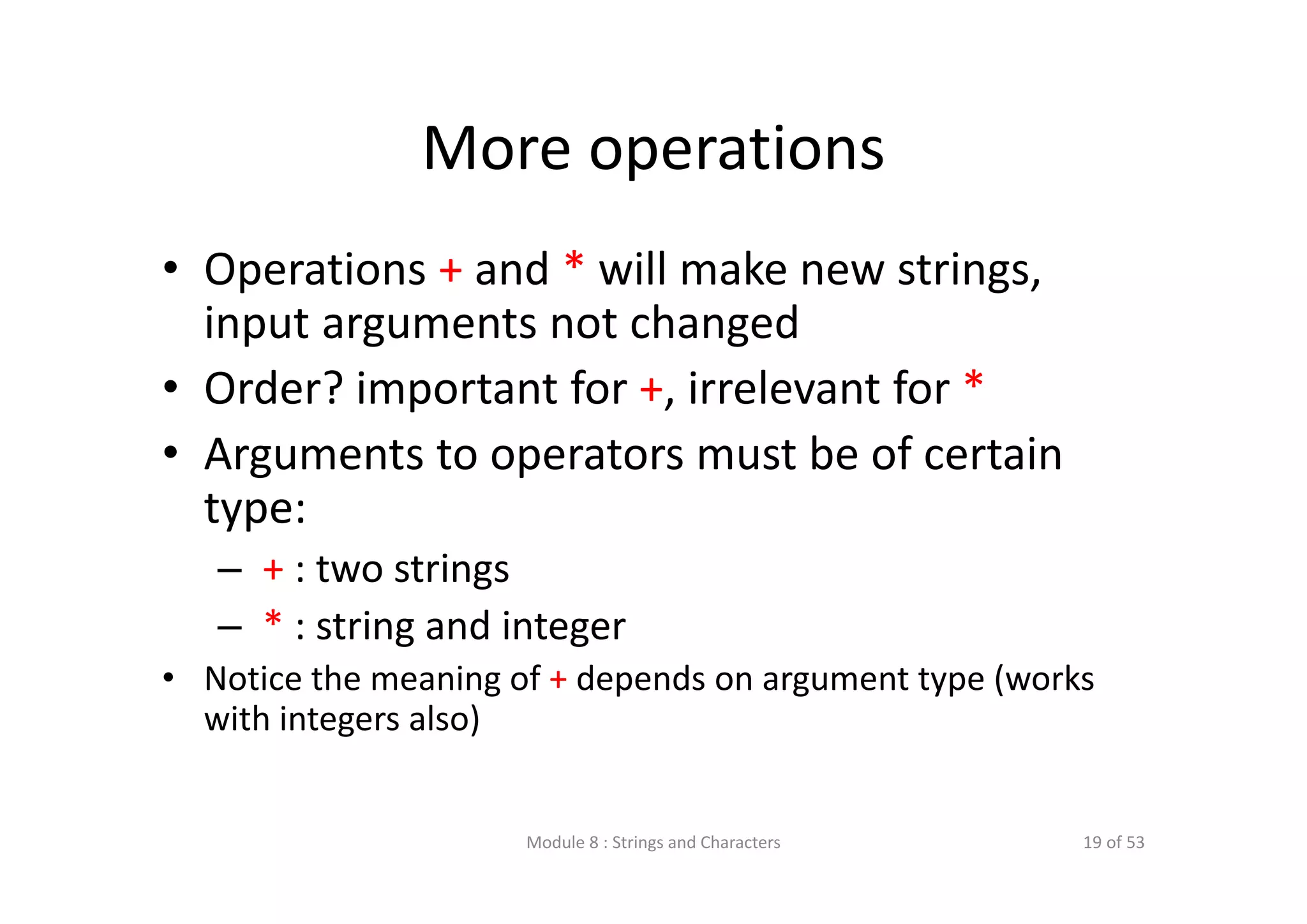
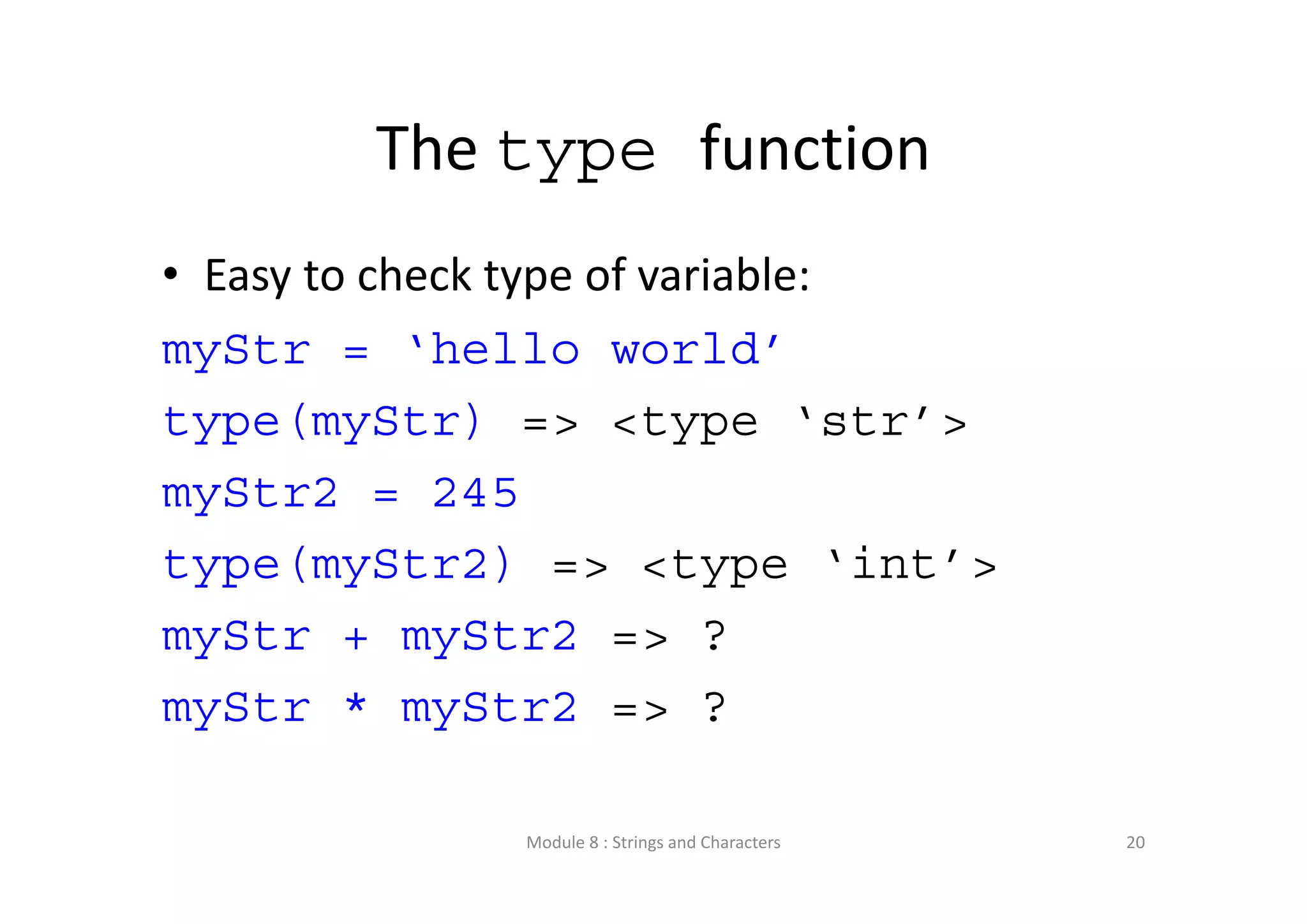
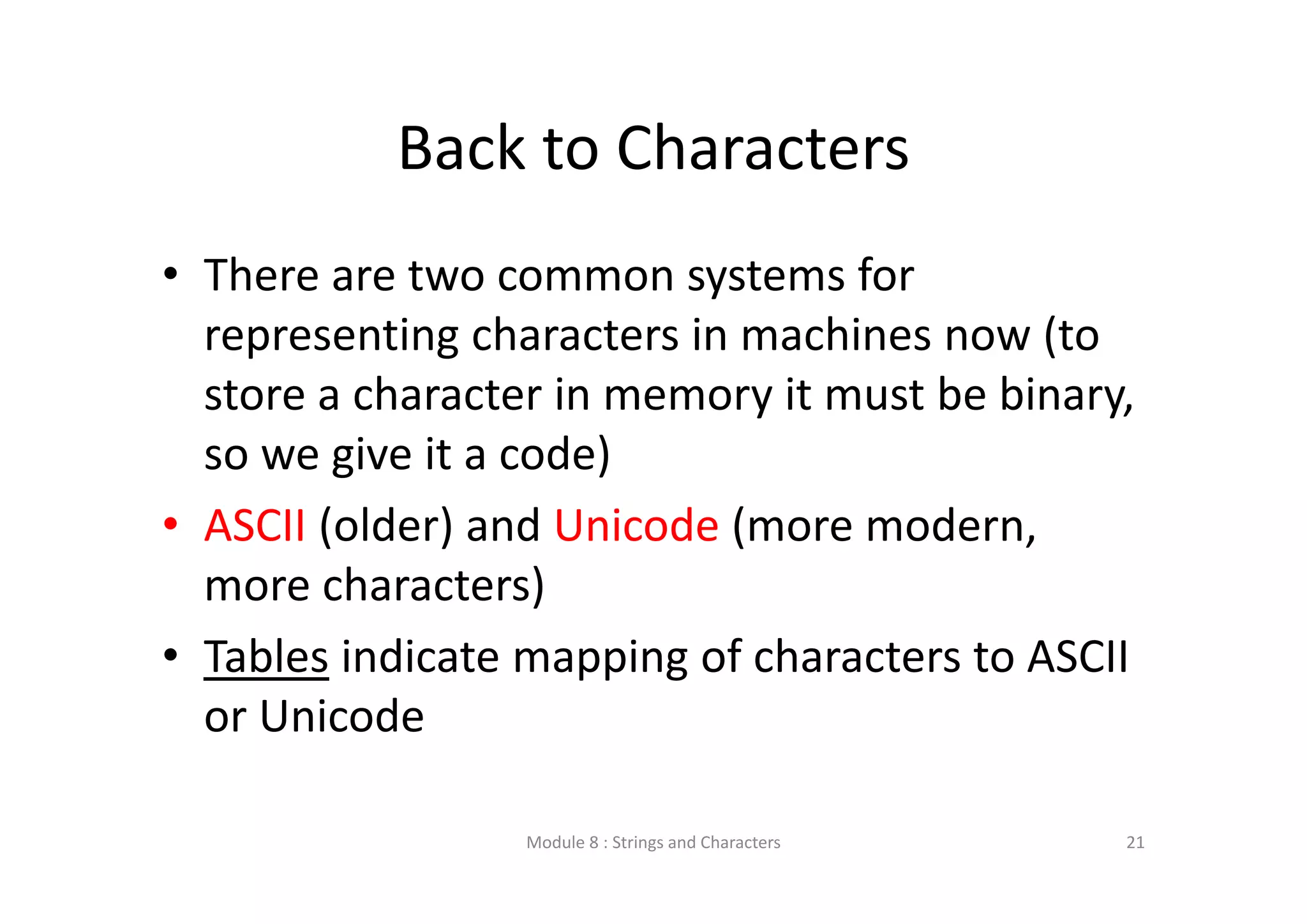
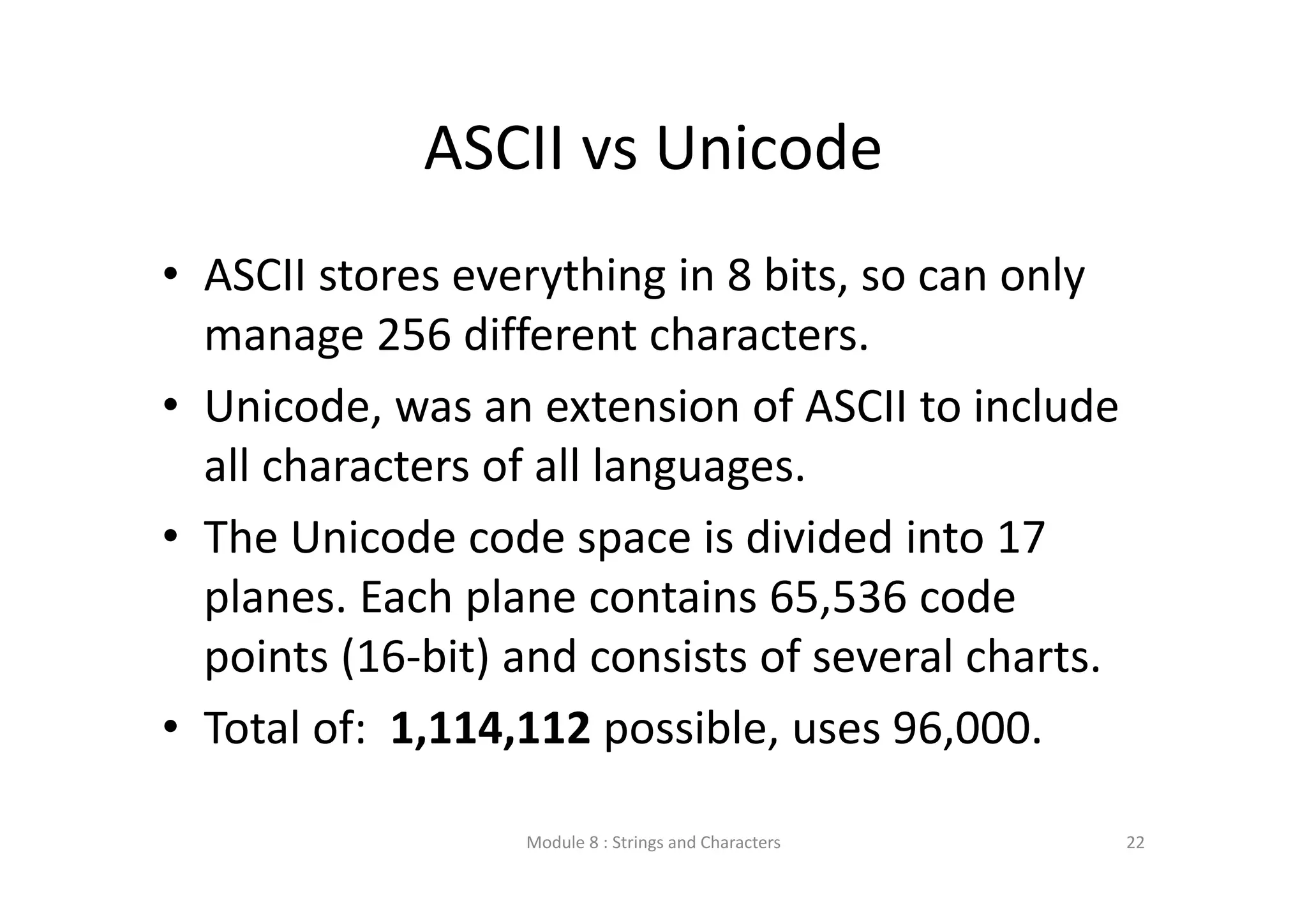
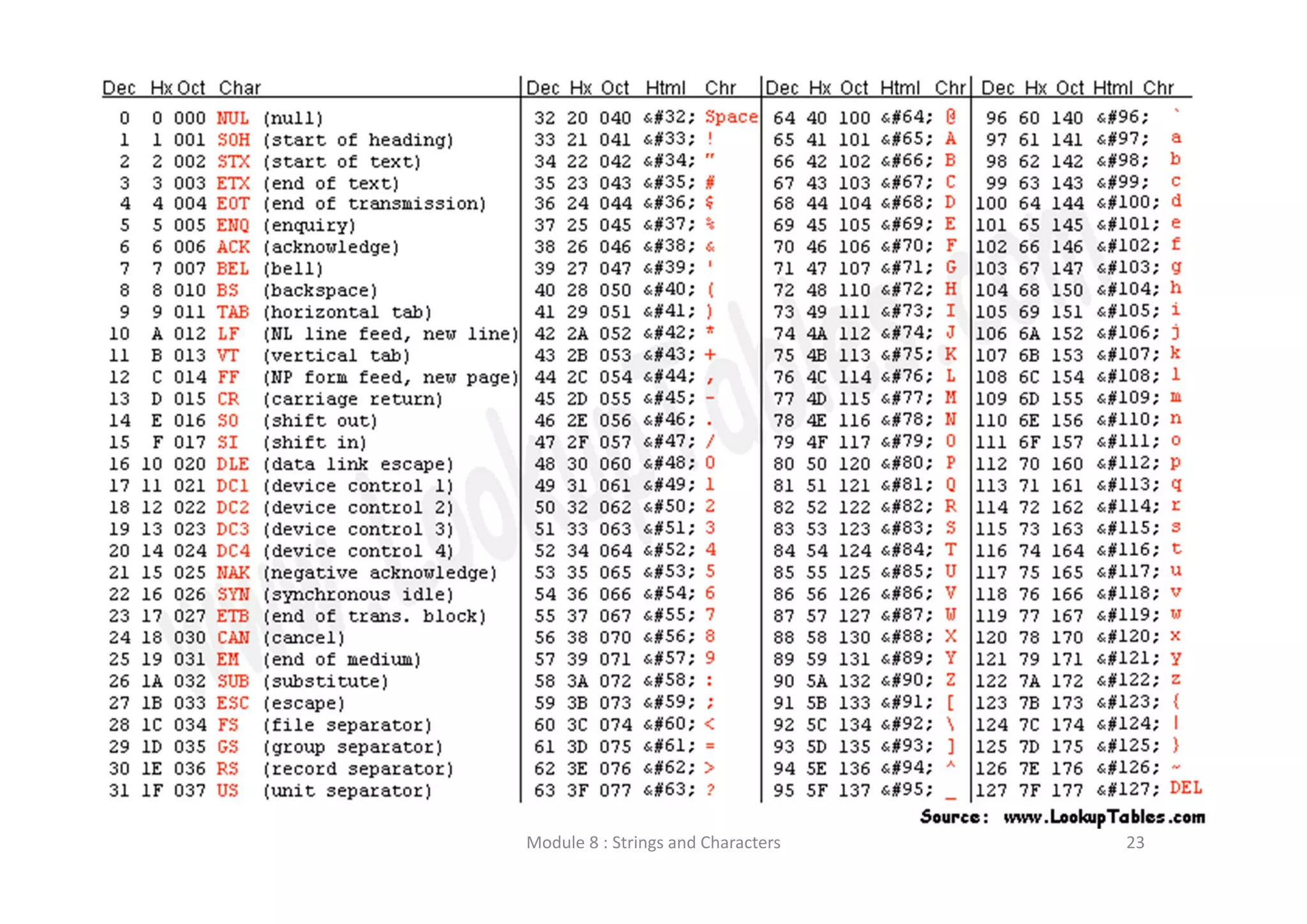
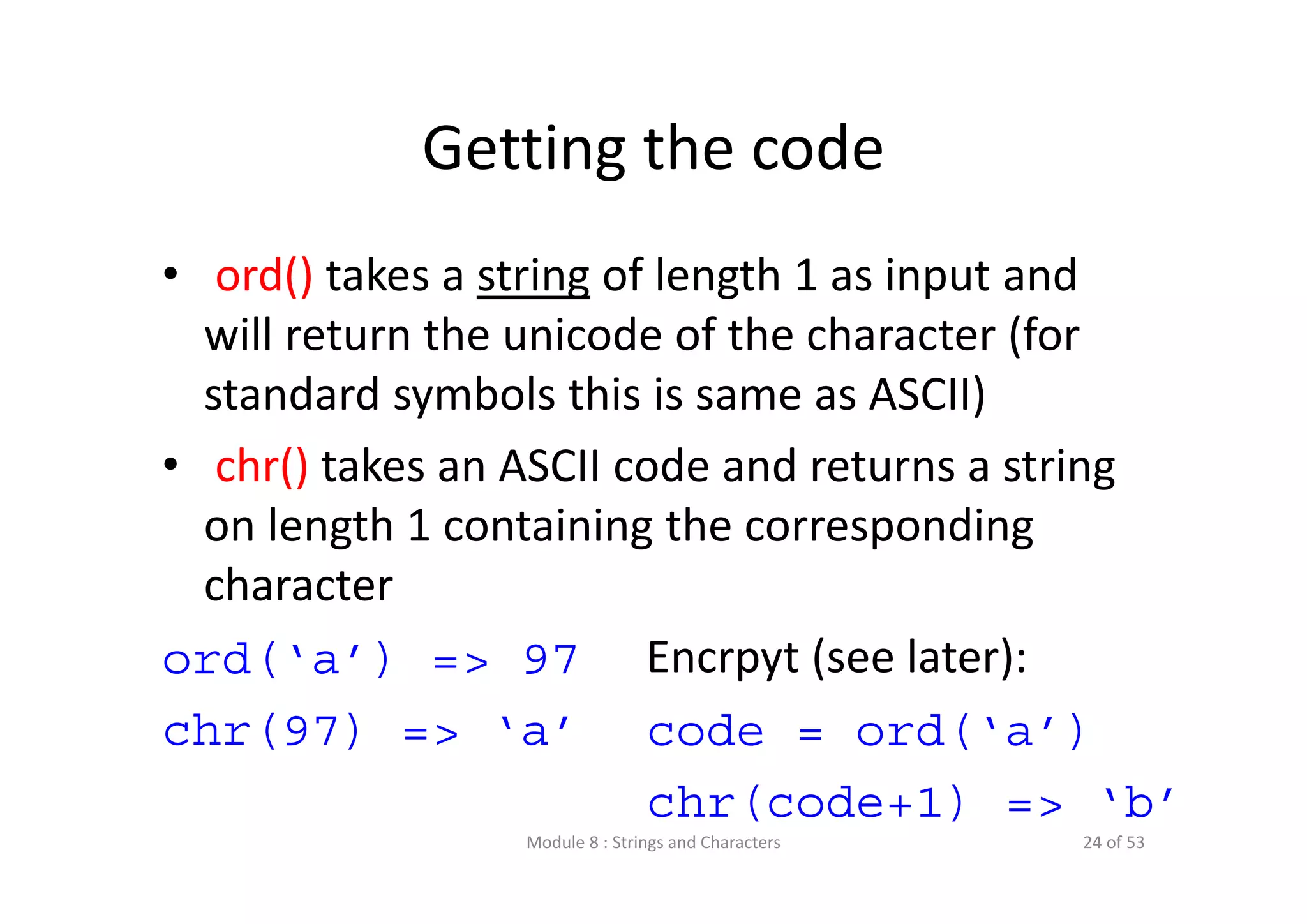
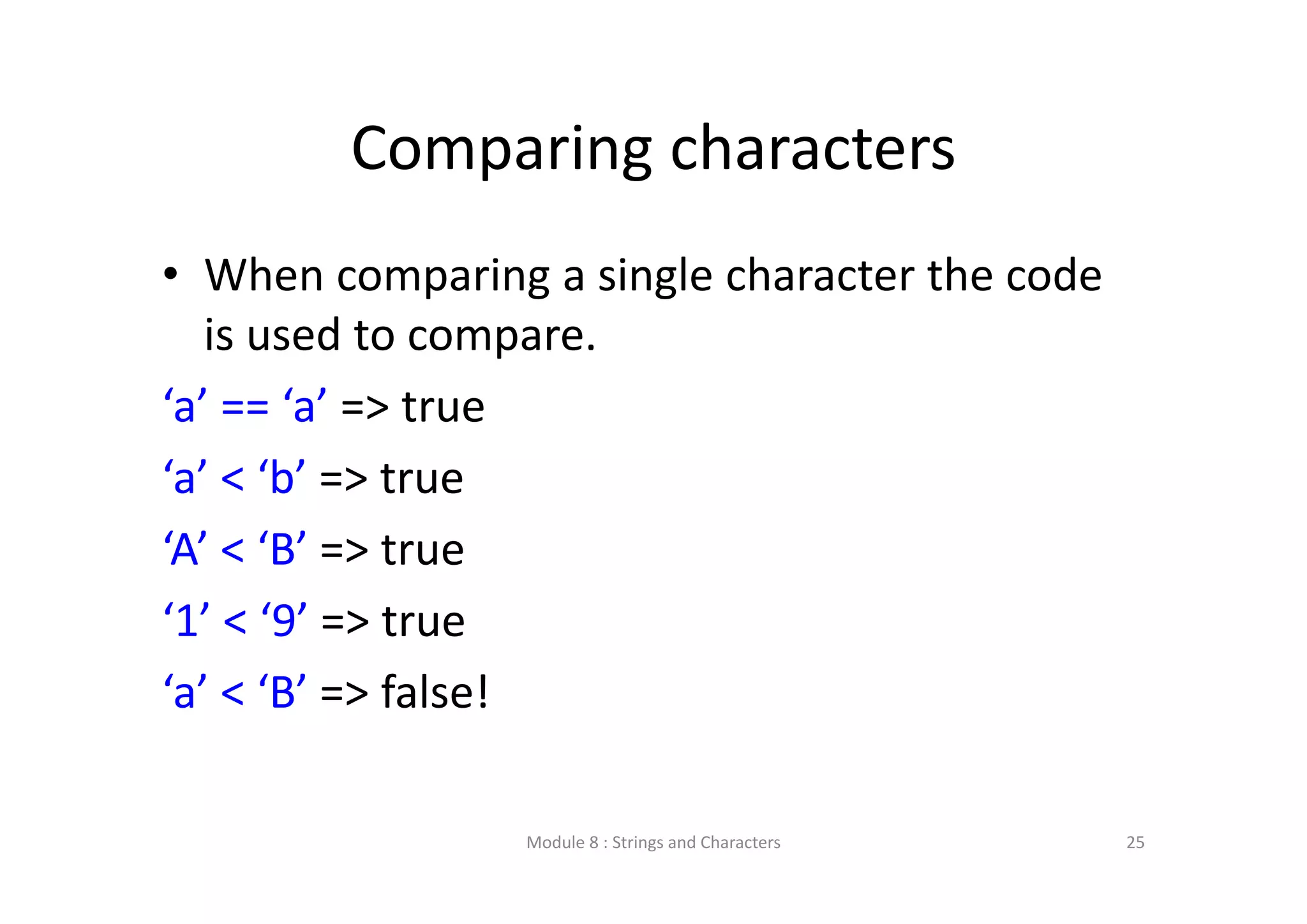
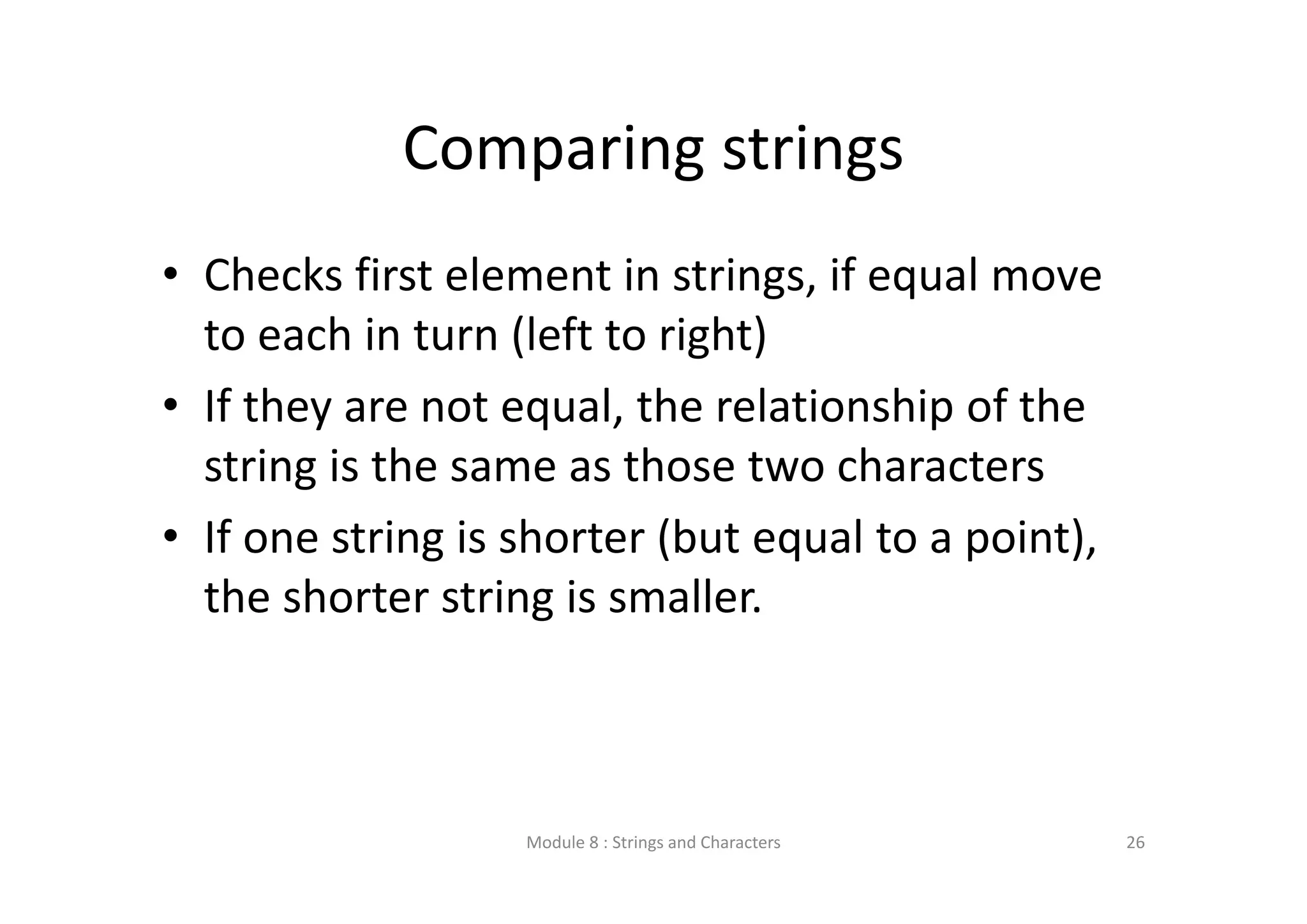
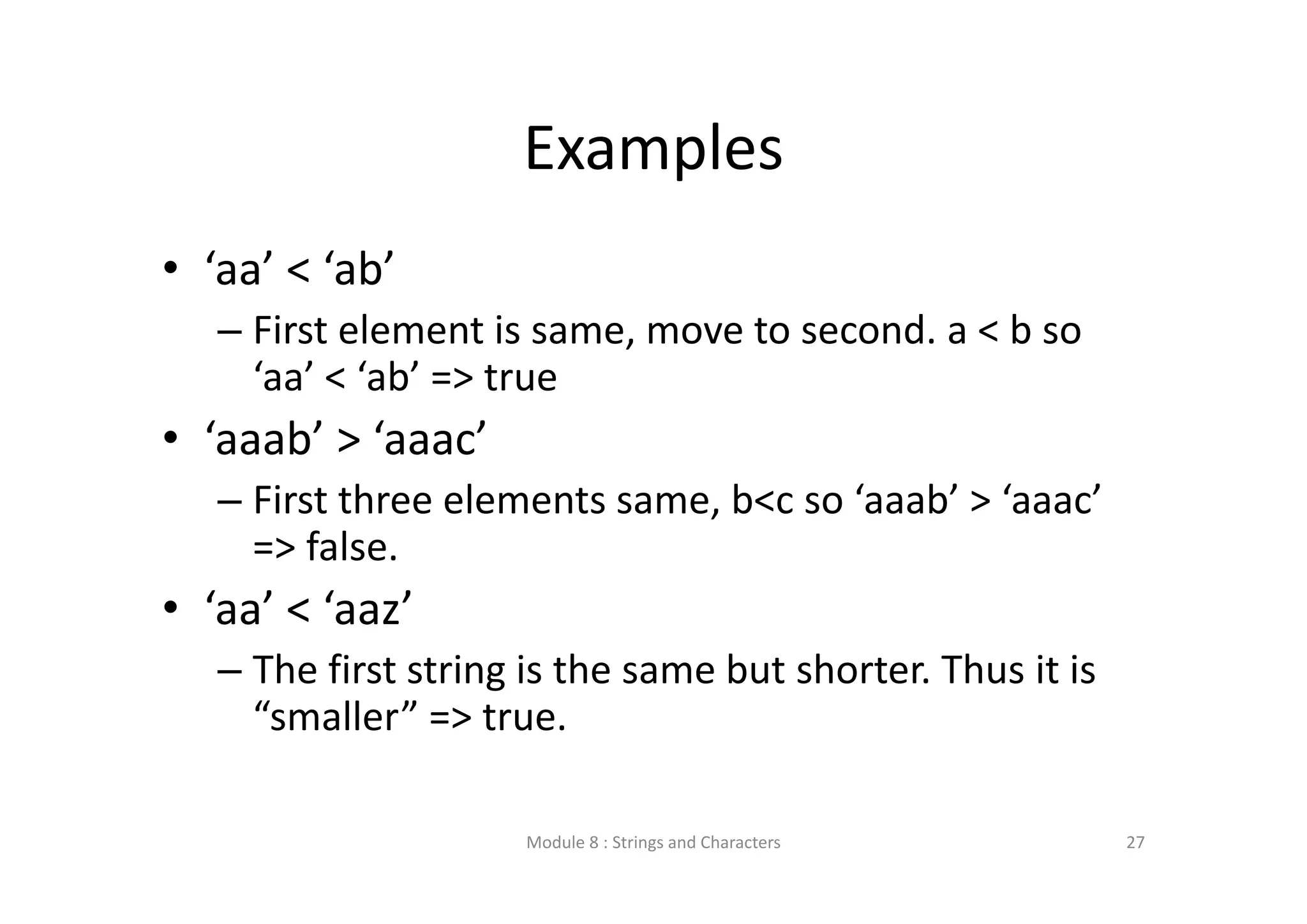
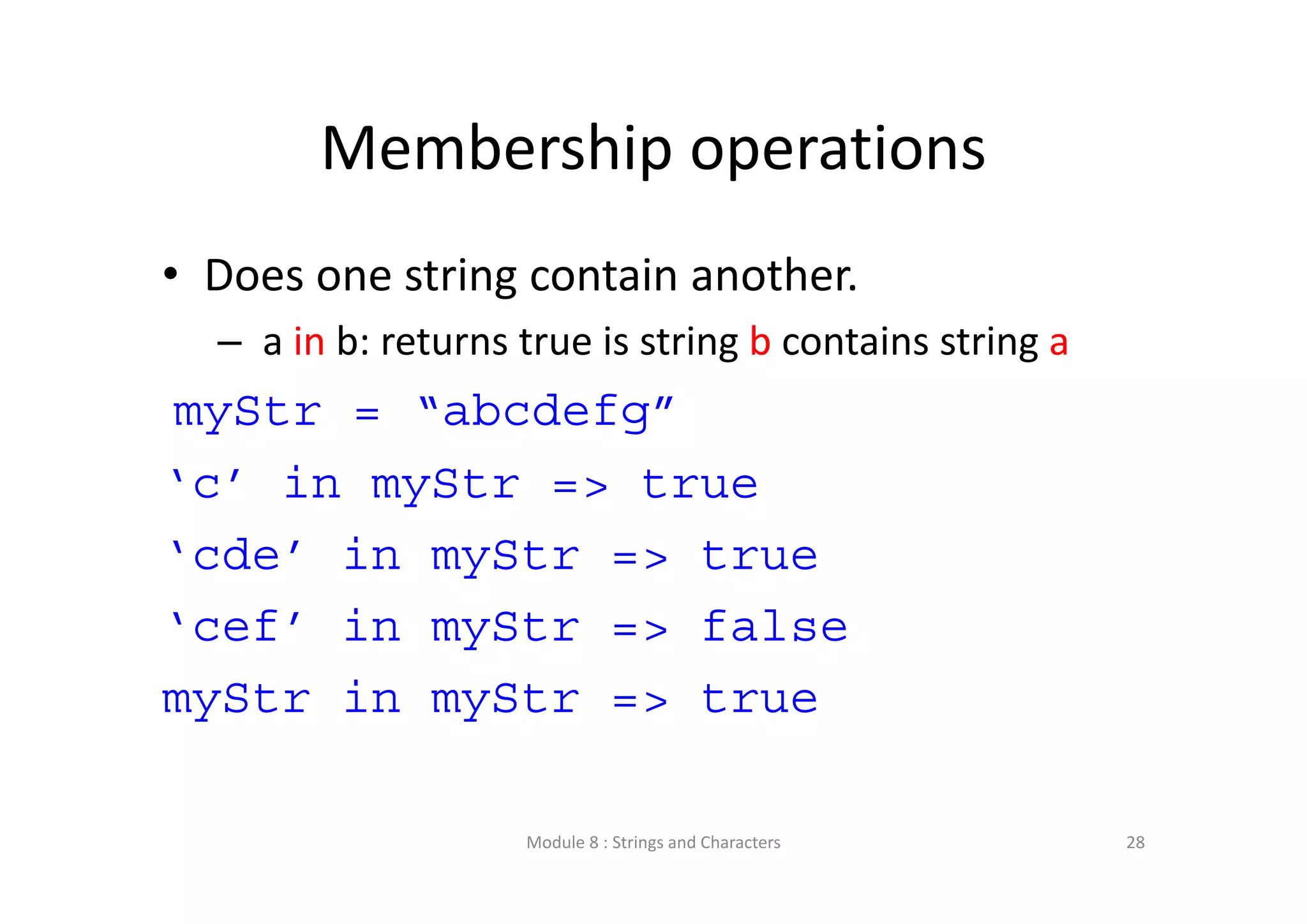
![Strings are Immutable – aStr = ‘spam’ – aStr[1] = ‘l’ ERROR • However, you can use it to make another string (copy it, slice it, etc). – newStr = aStr[:1] + ‘l’ + aStr[2:] – aStr ‘spam’ – newStr => ‘slam’ Module 8 : Strings and Characters • Strings are immutable, that is you cannot change one once you make it: 29](https://image.slidesharecdn.com/lecture8stringsandcharacters-130525014000-phpapp02/75/Lecture-8-strings-and-characters-29-2048.jpg)
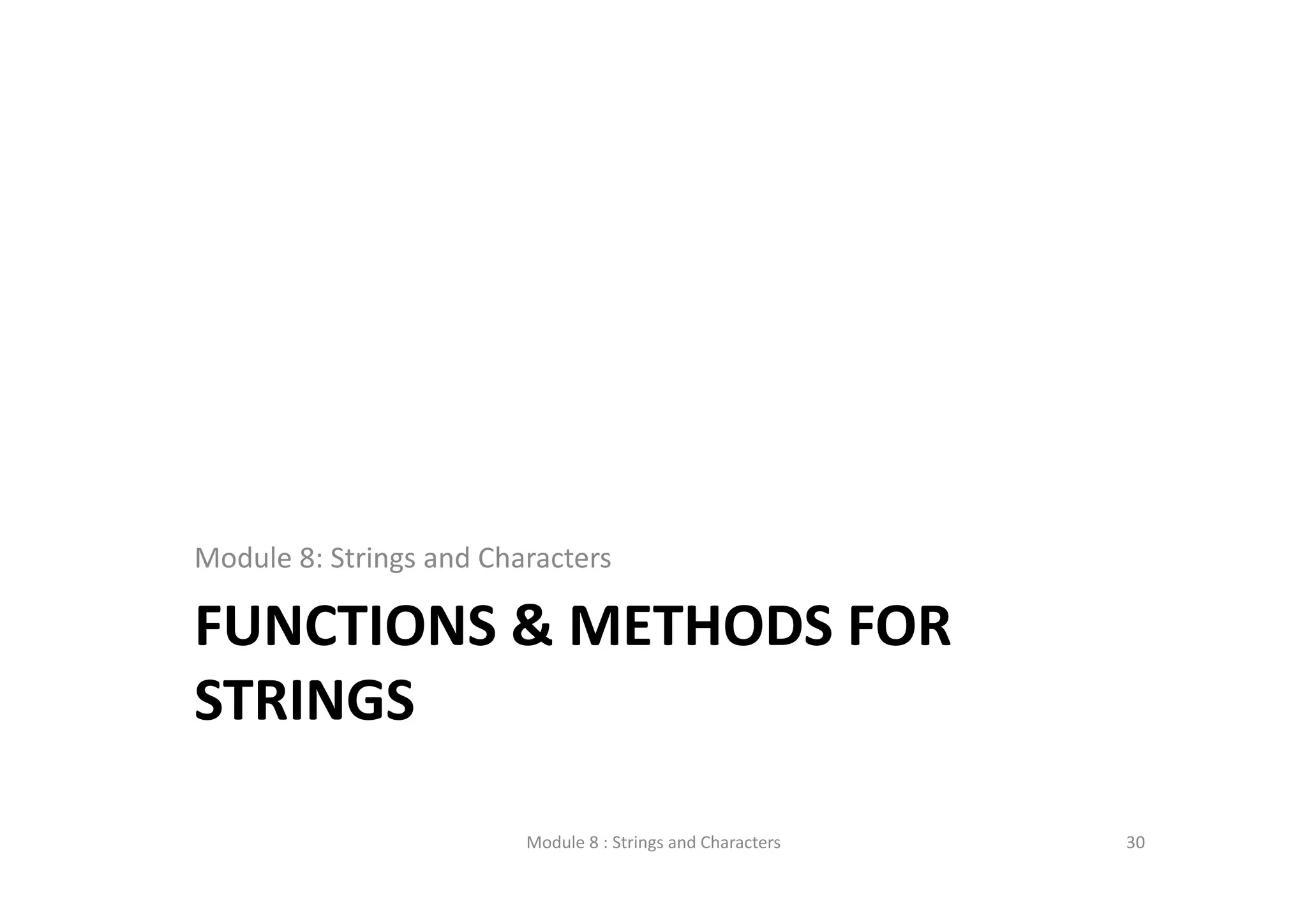
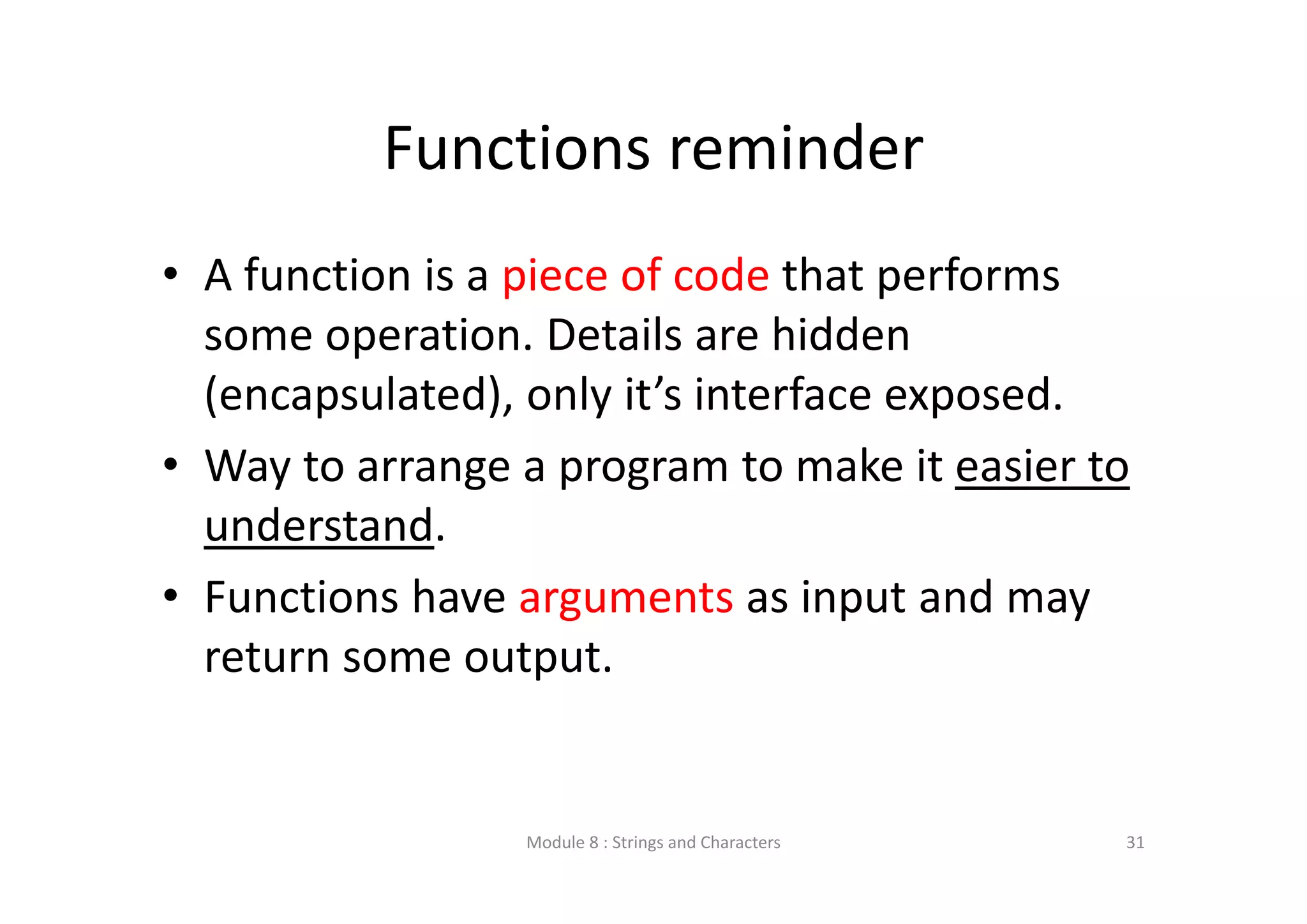
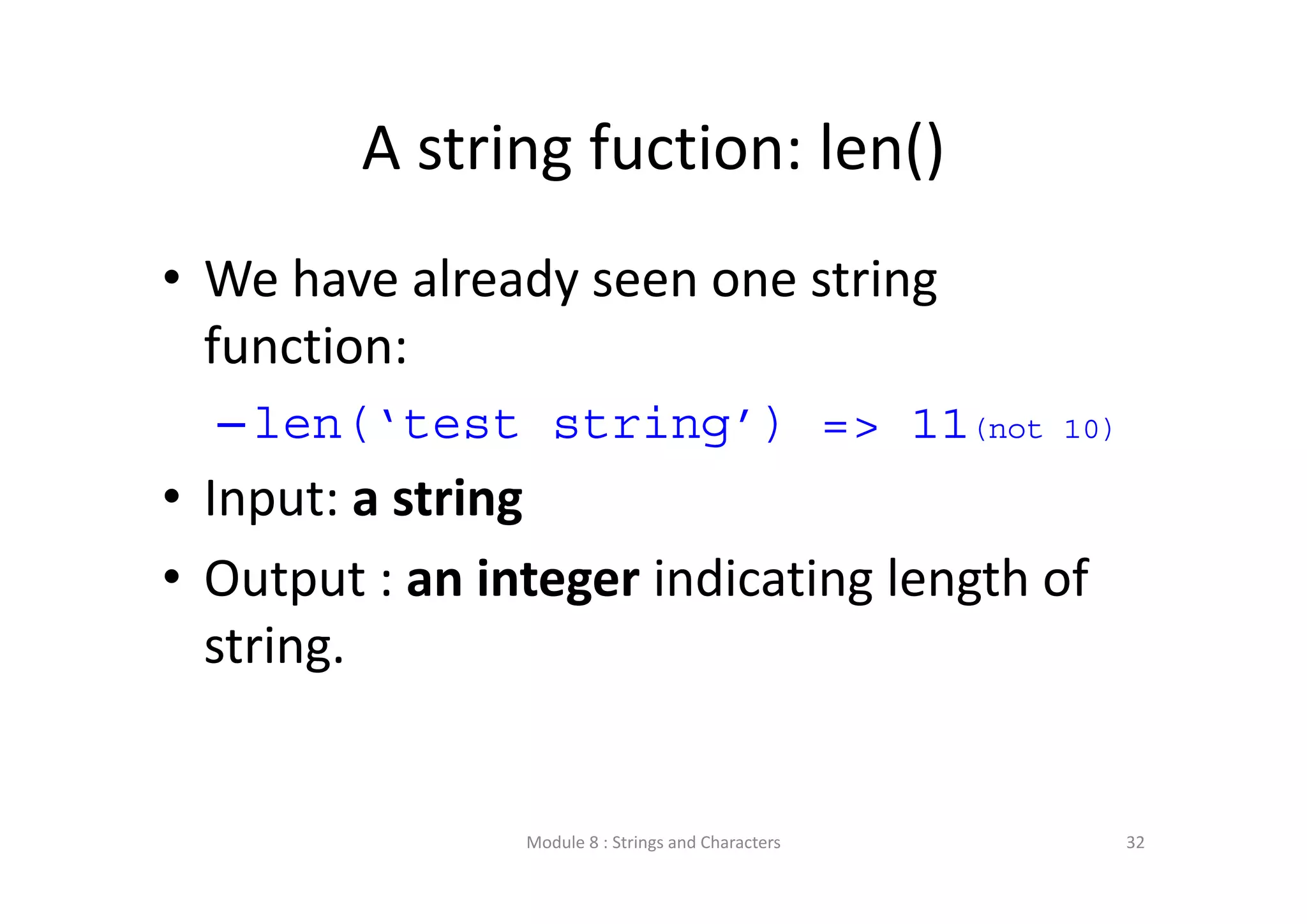
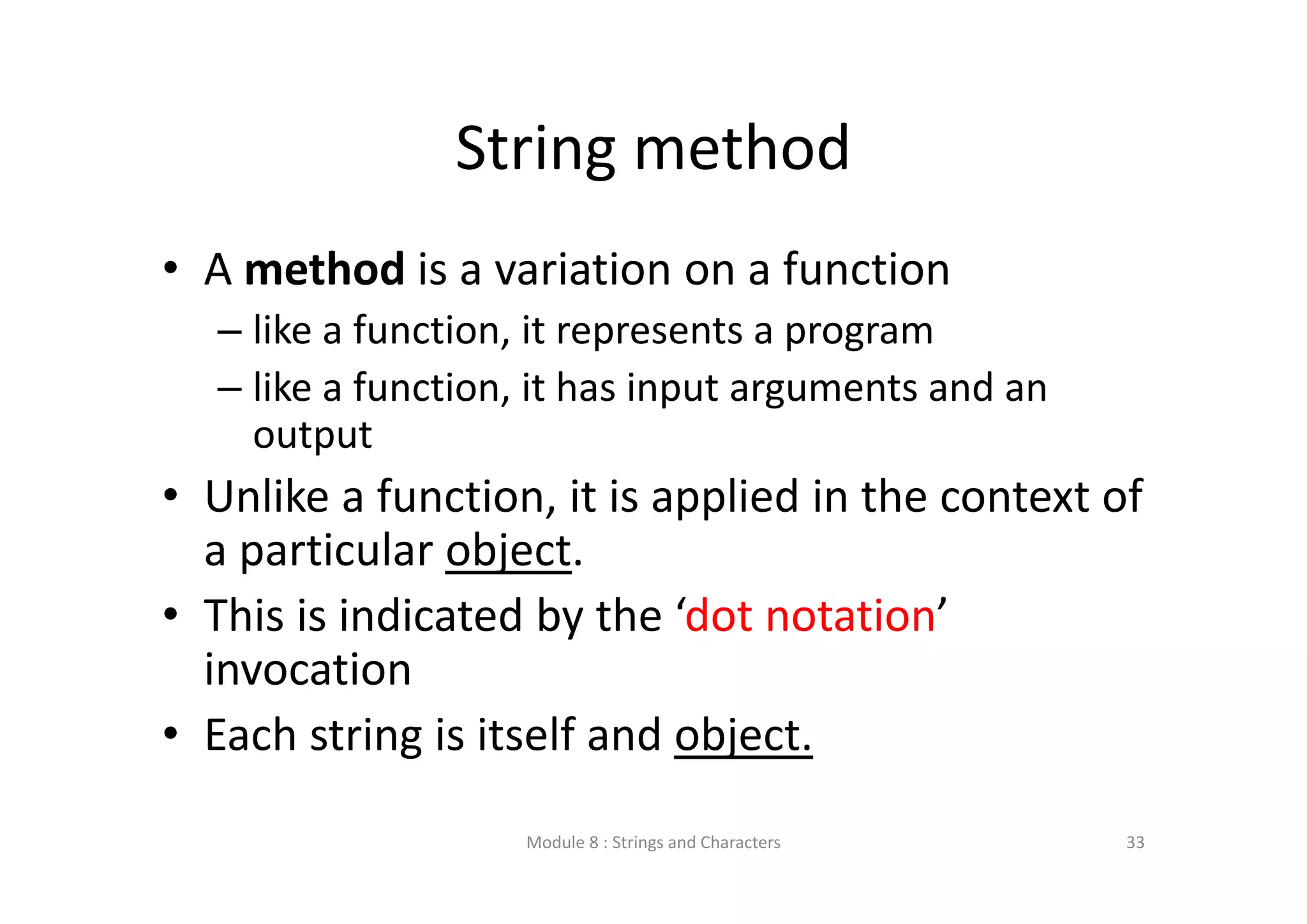
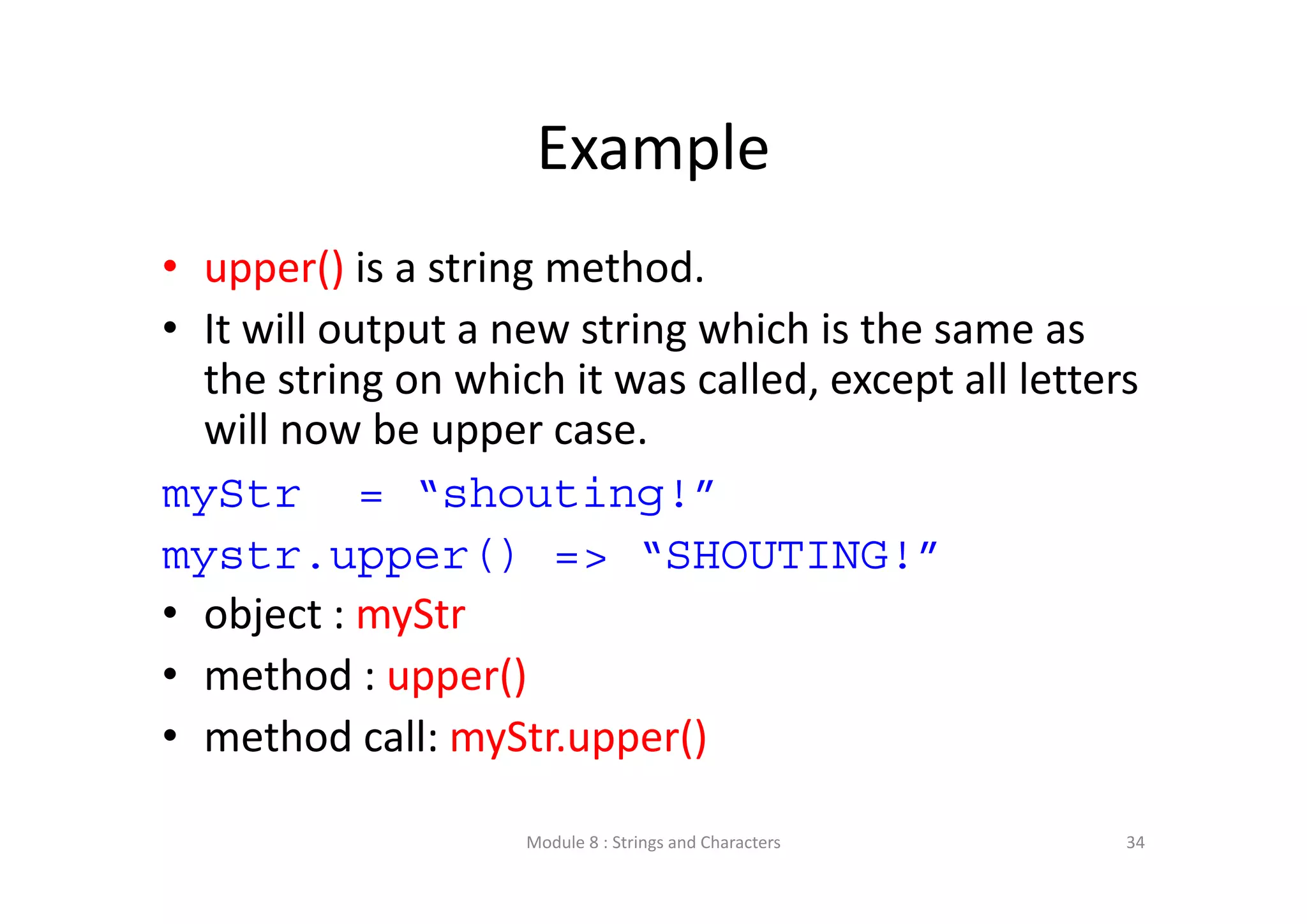
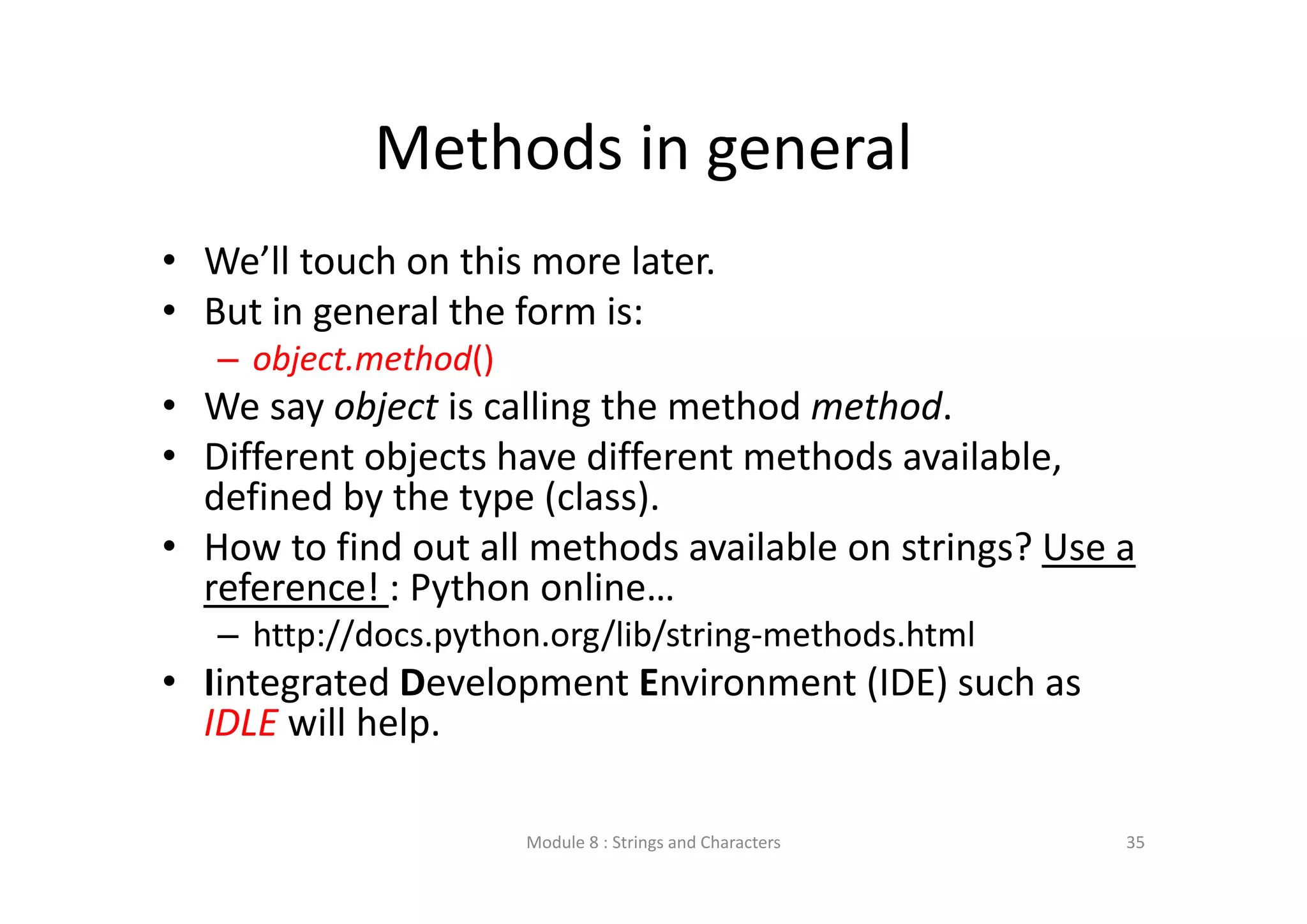
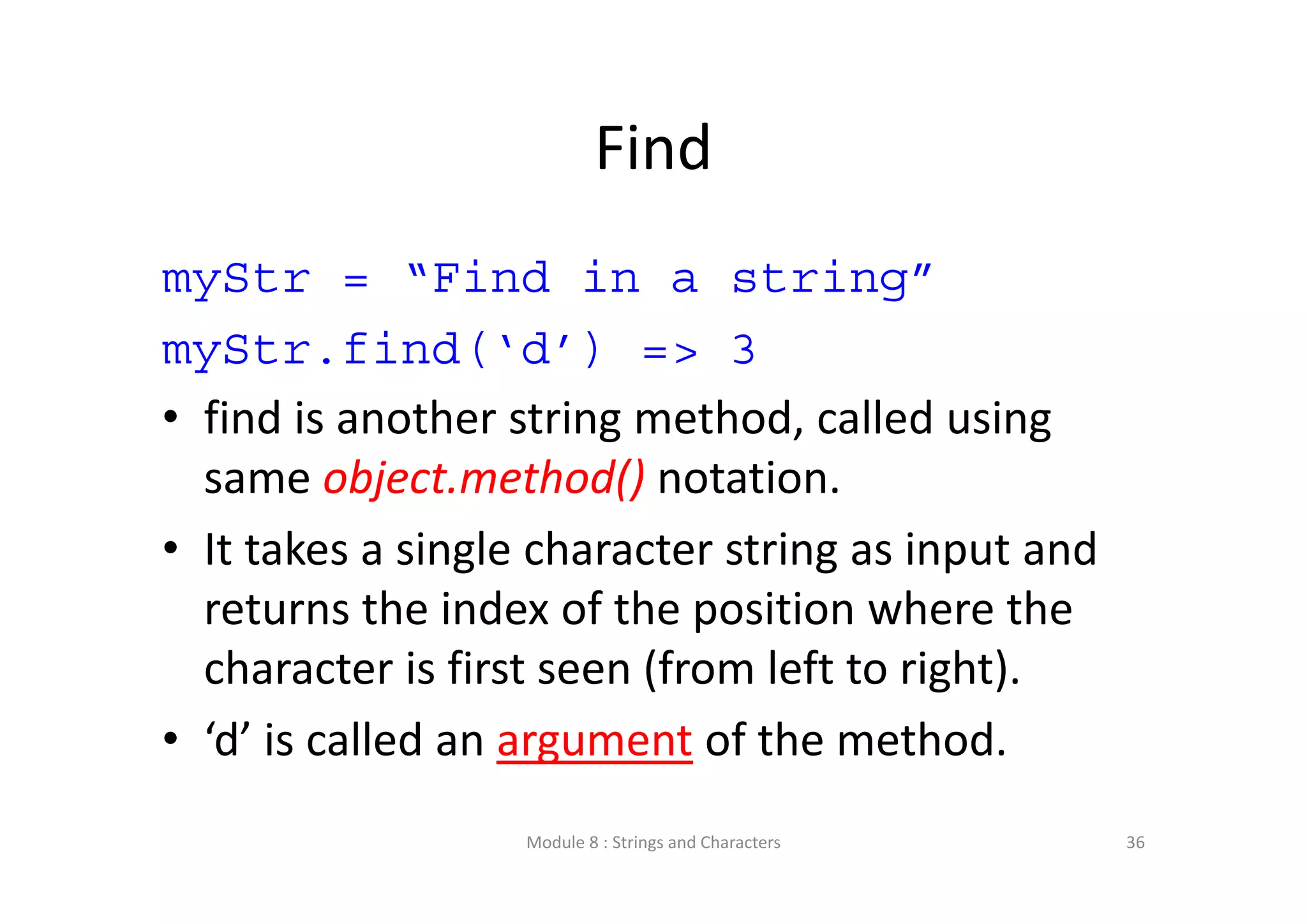
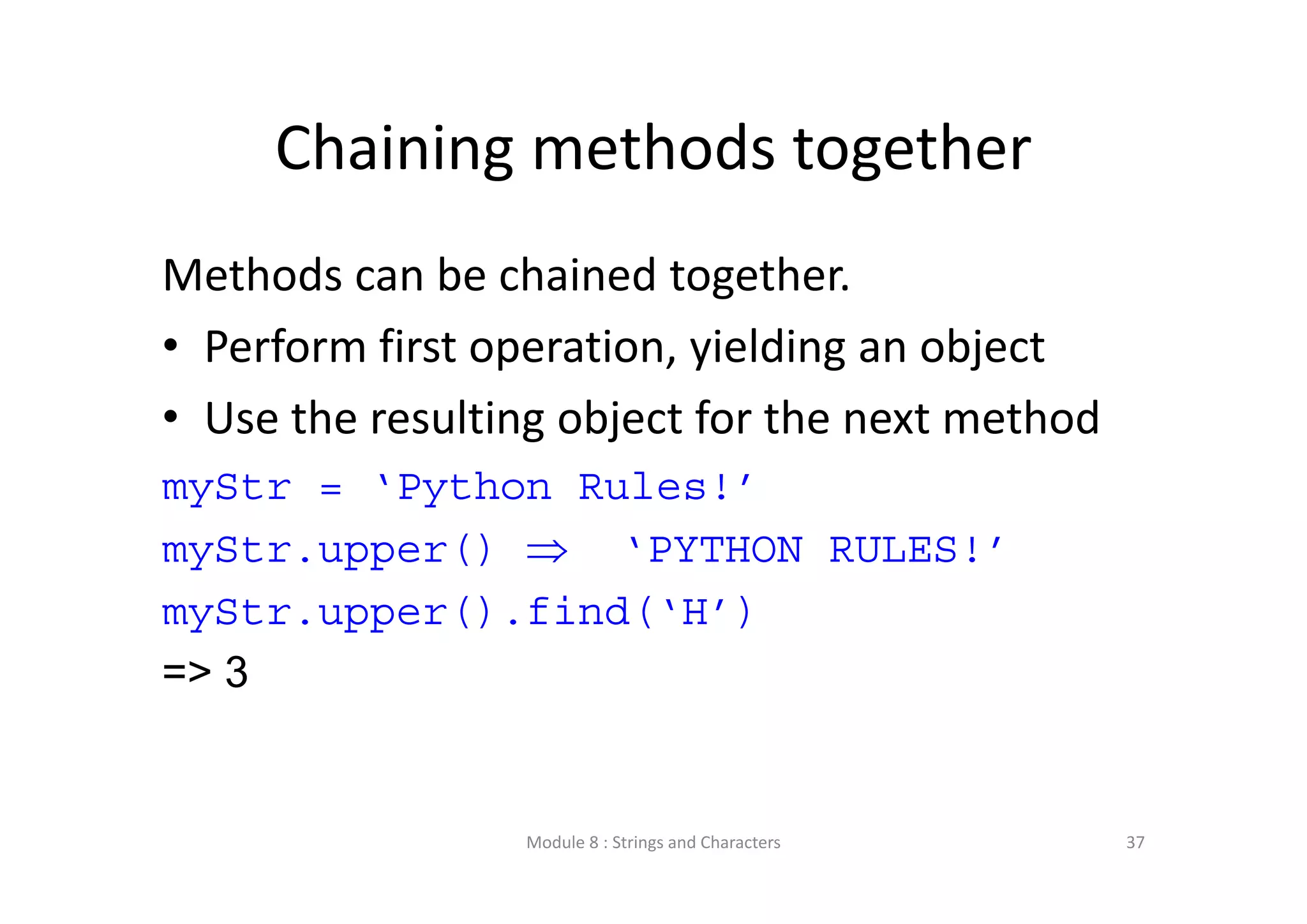

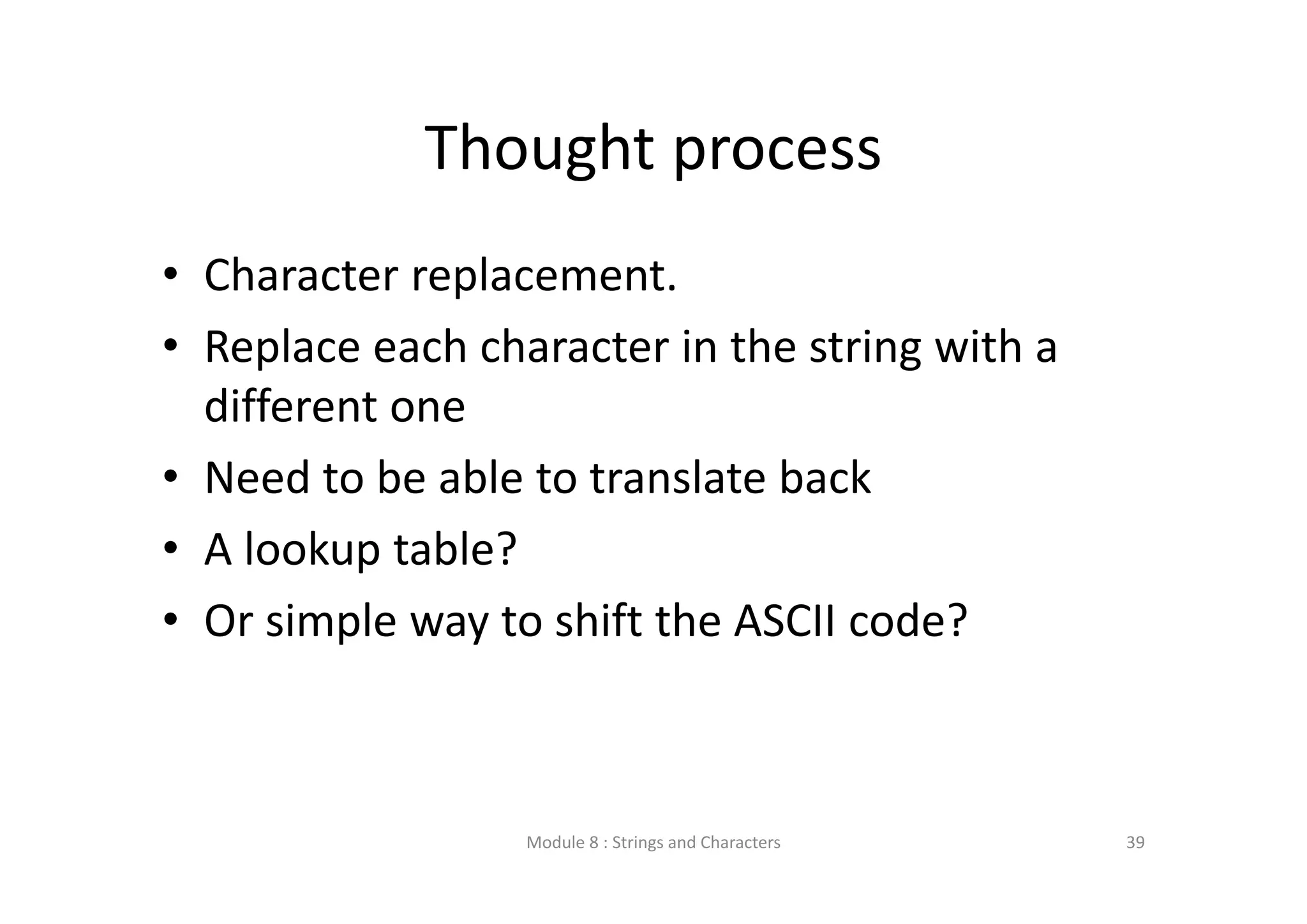

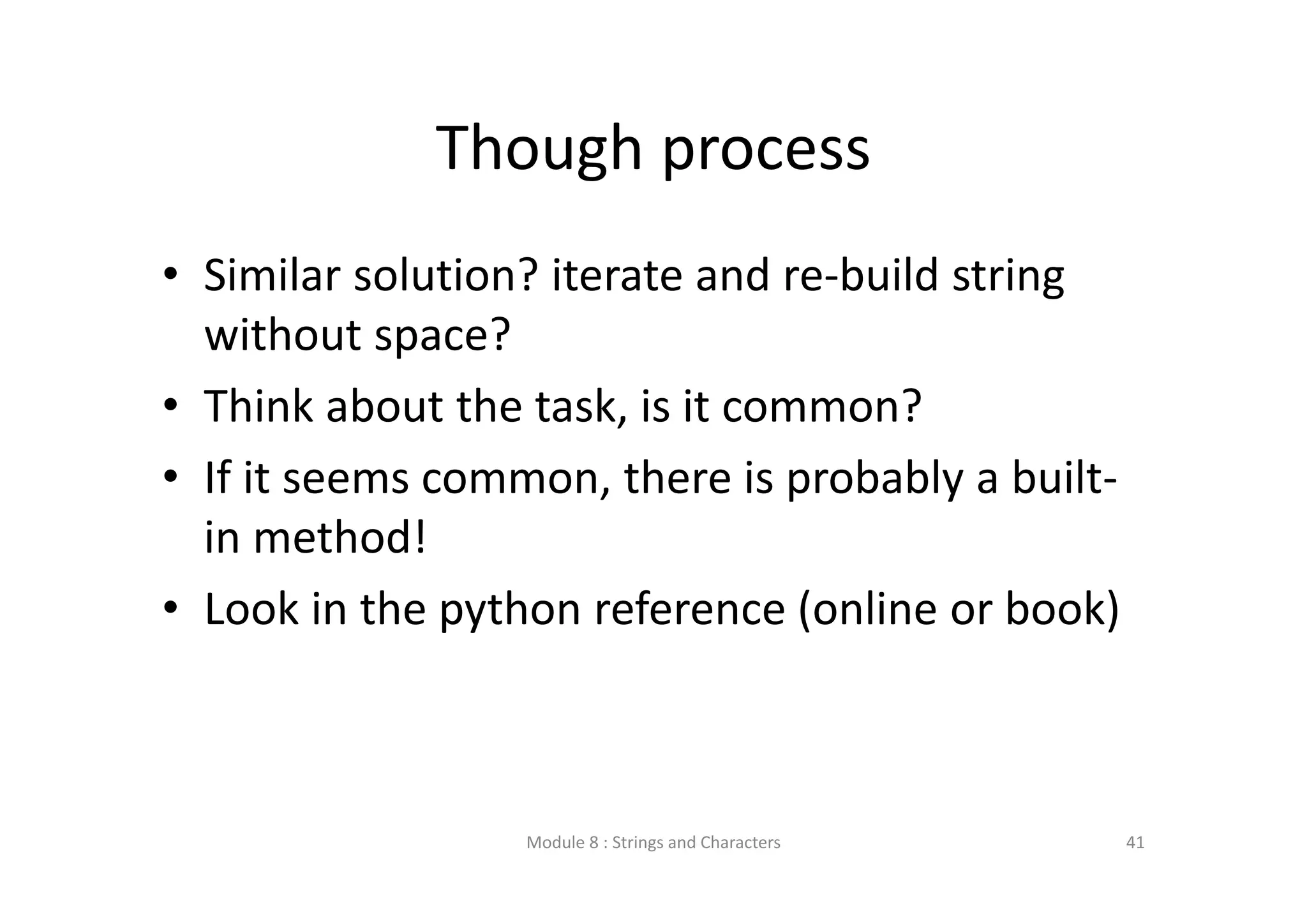
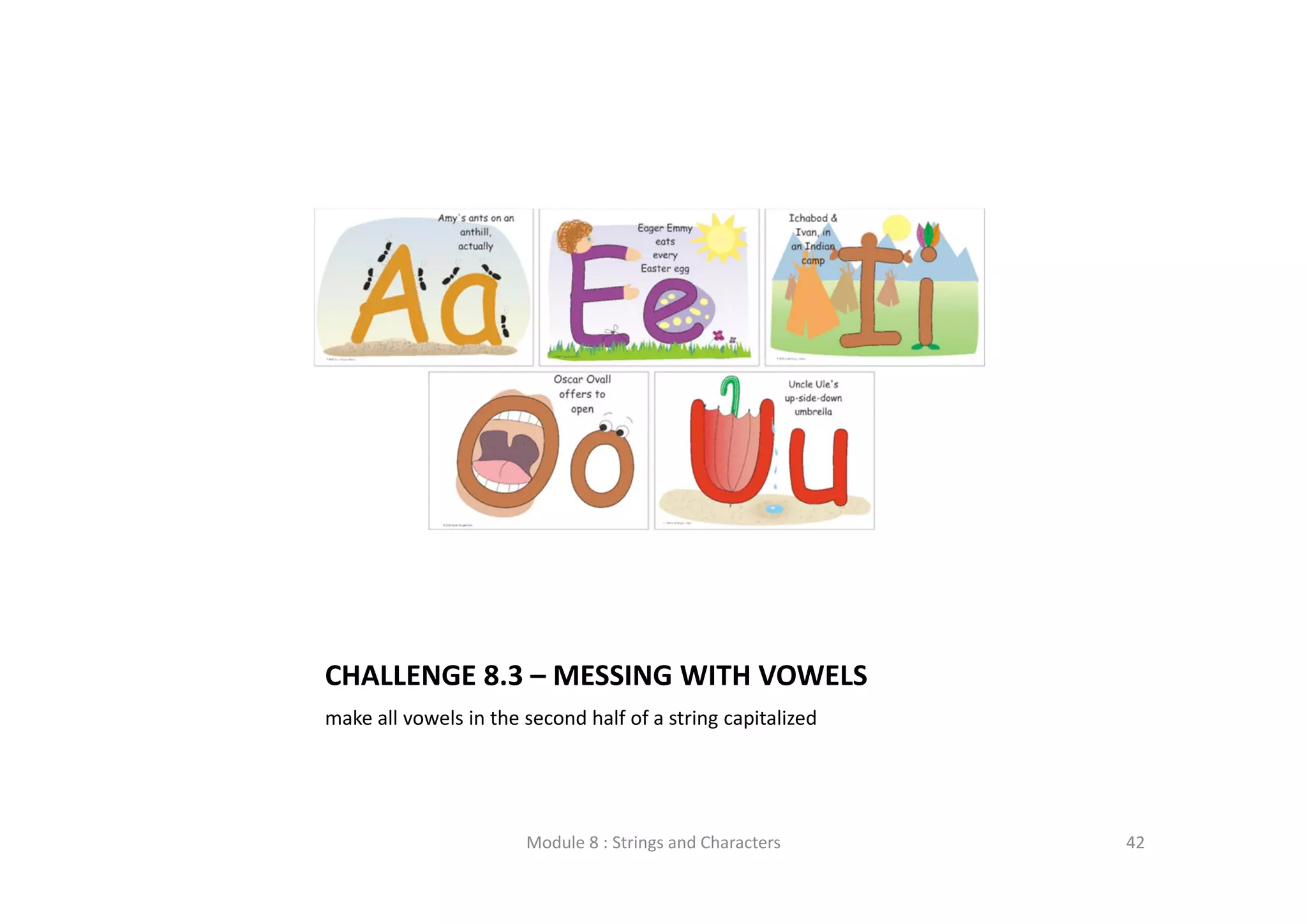
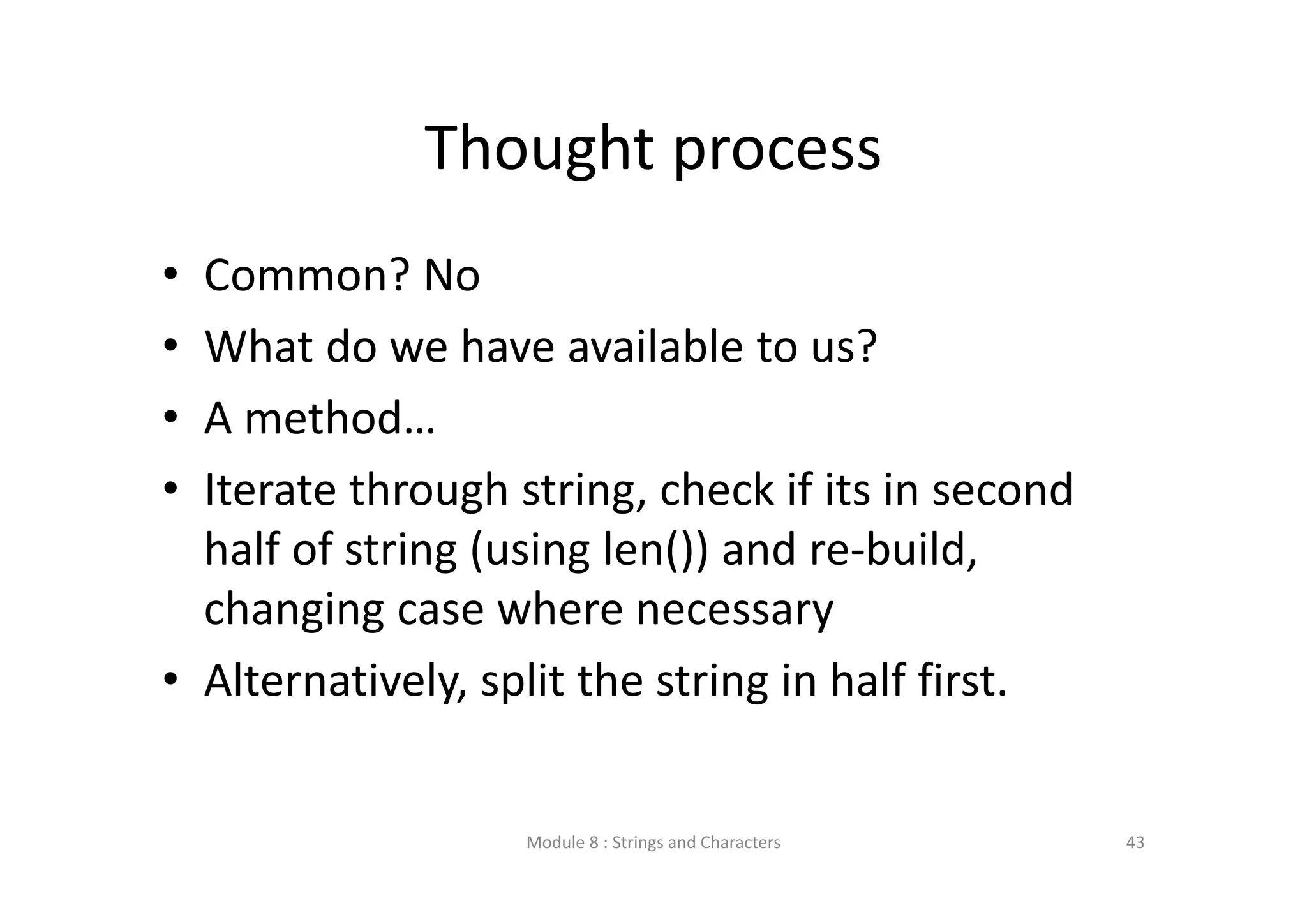
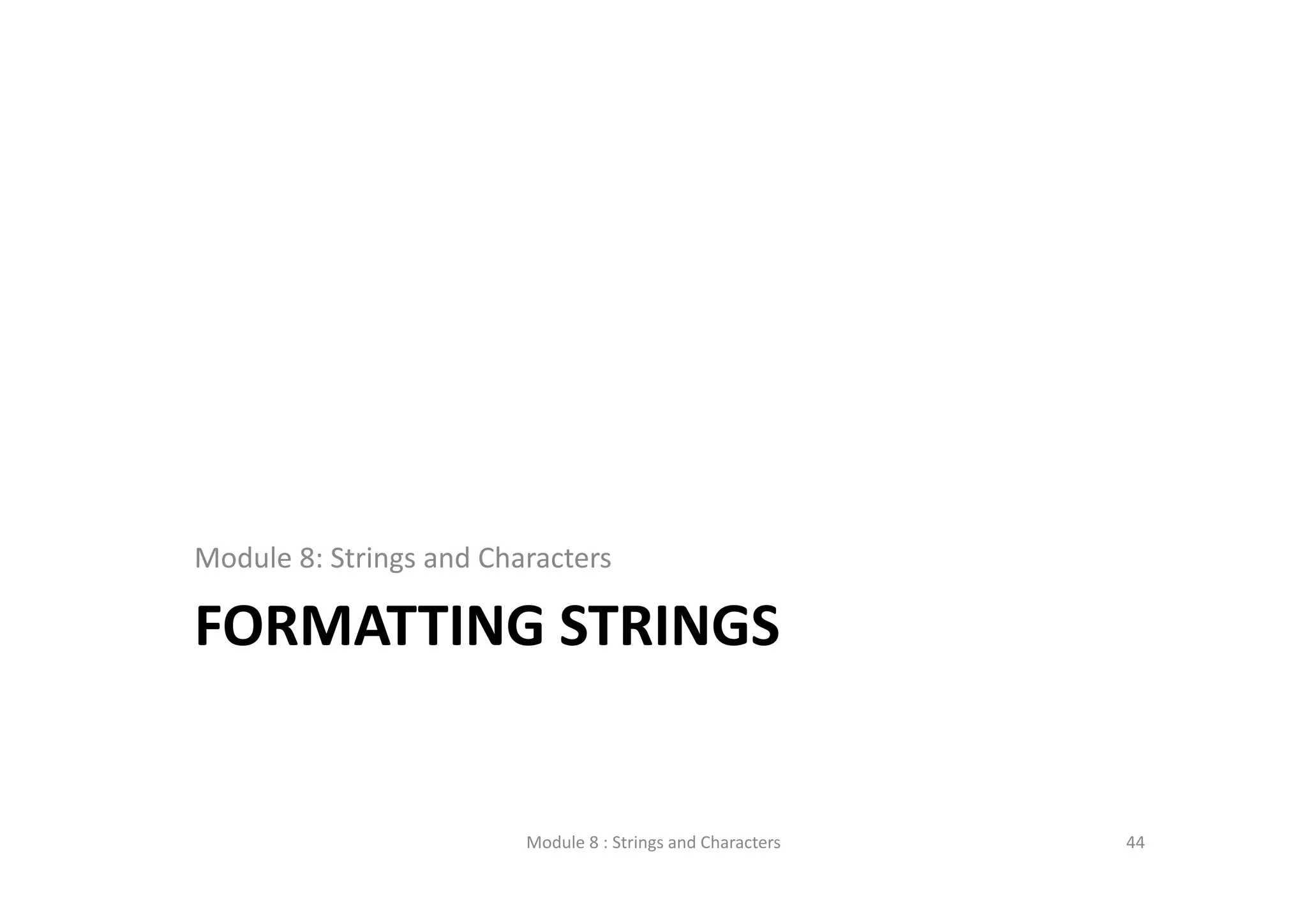
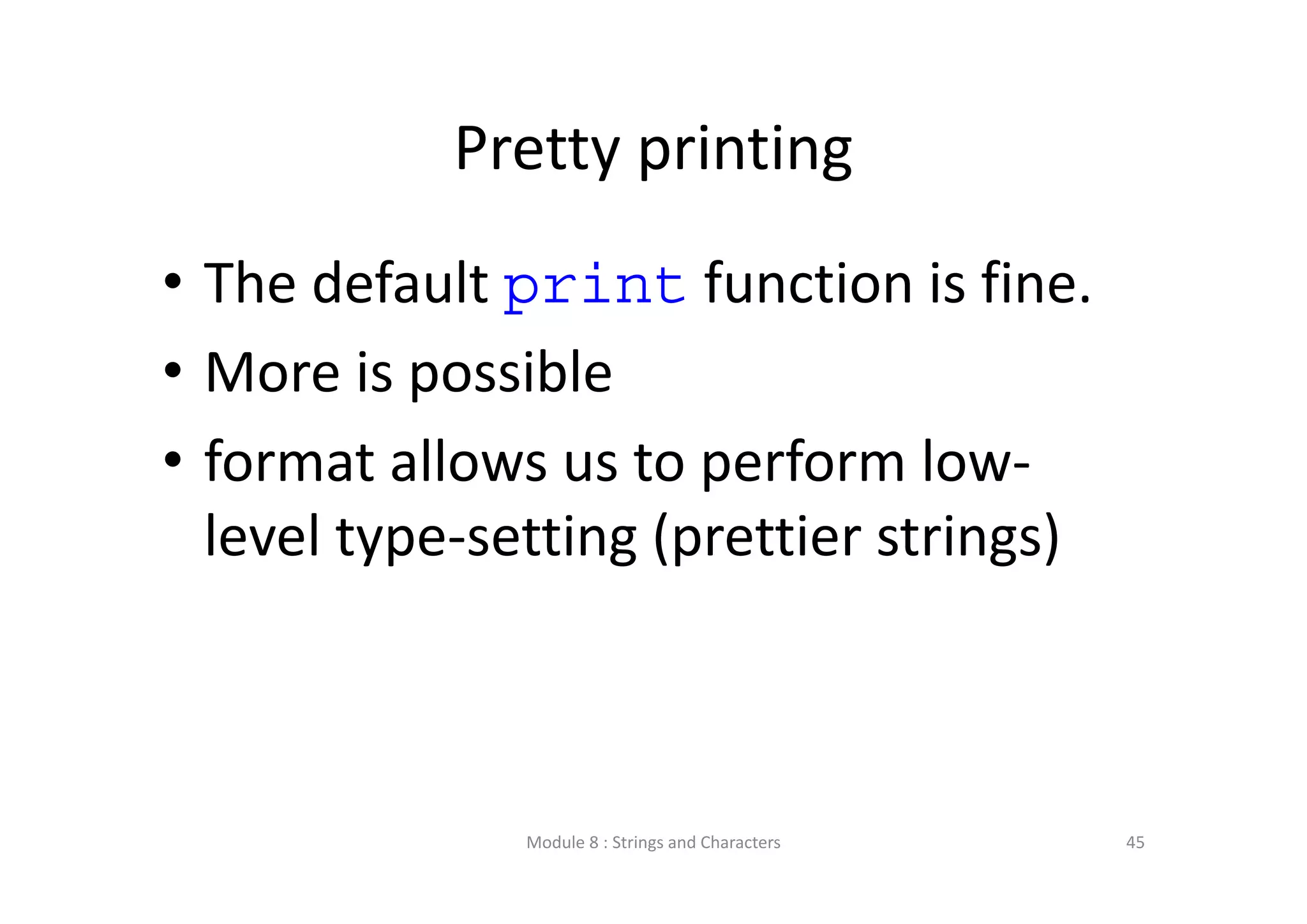
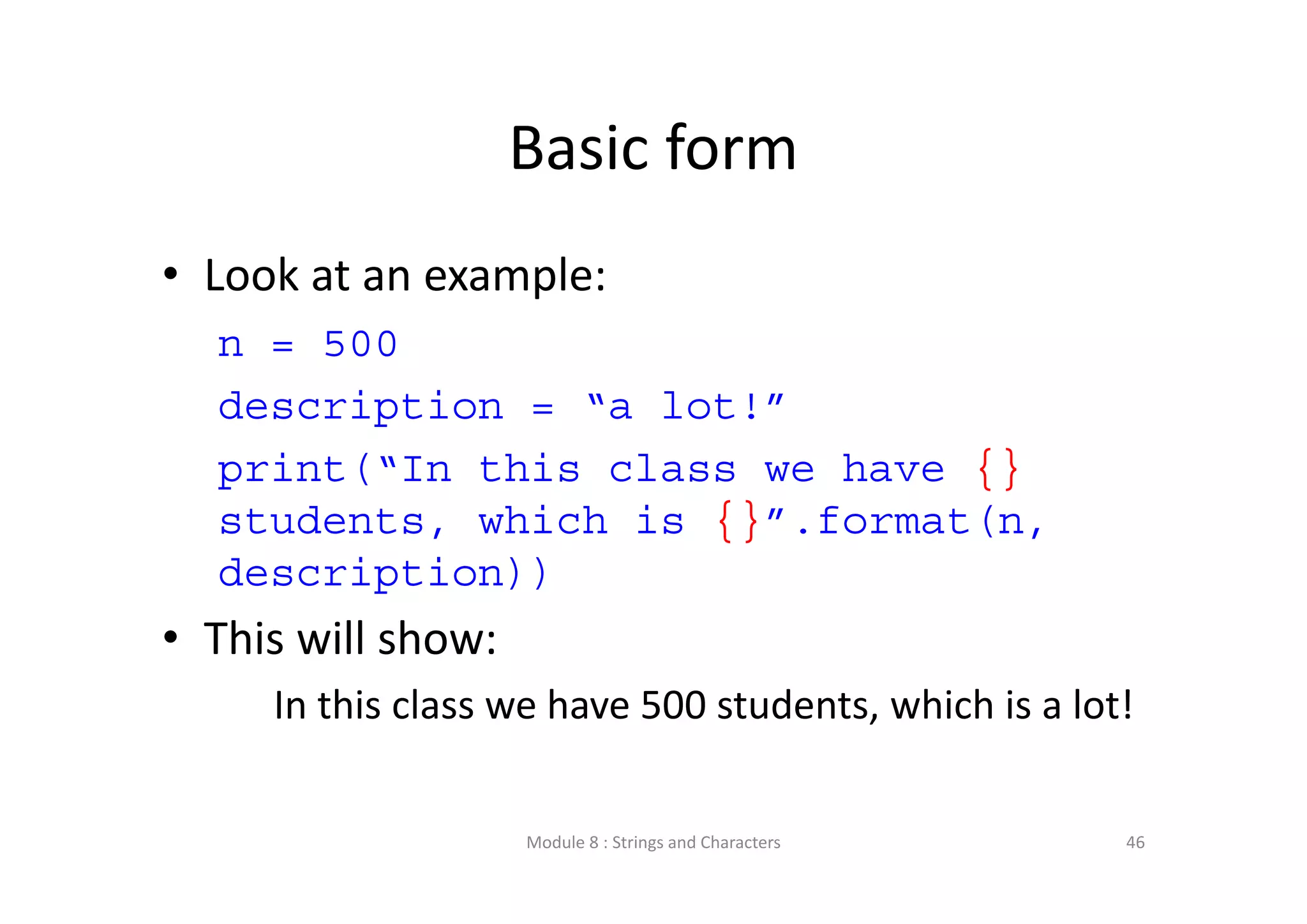
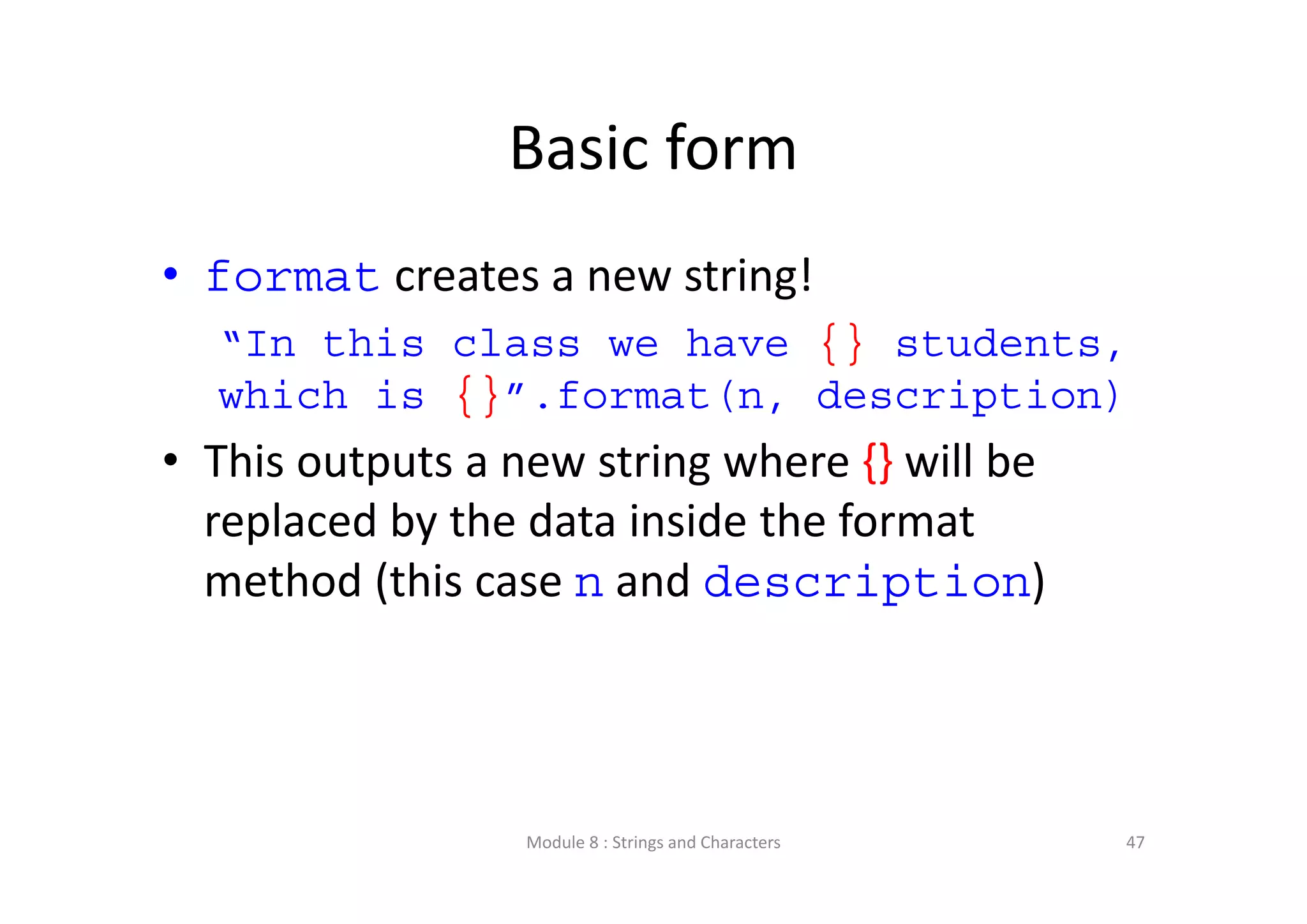
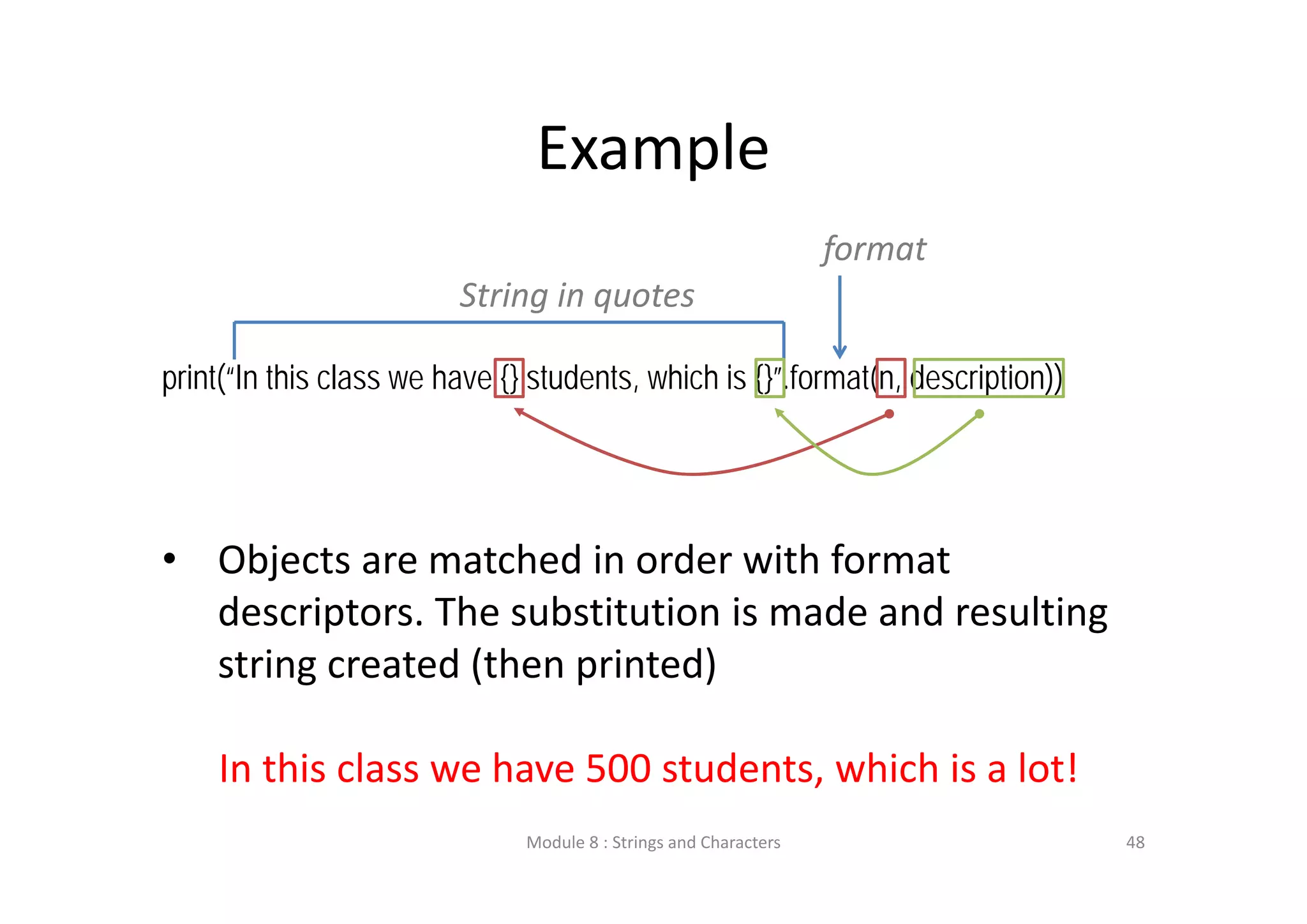
![Format String • We can put ‘stuff’ inside the {} which specifies how the data should be printed (i.e., make it pretty) • Overall: {:[align] [min_width] [.precision][descriptor]} [ ] means optional Module 8 : Strings and Characters 49](https://image.slidesharecdn.com/lecture8stringsandcharacters-130525014000-phpapp02/75/Lecture-8-strings-and-characters-49-2048.jpg)
